
1856. St. Monday, the People's Holiday, on Hampstead Heath
This looks to be one image of a set, all titled ‘St. Monday, the People’s Holiday’. Saint Monday refers to an old tradition of absenteeism on Mondays, at a time when the working week ran from Monday to Saturday, with only Sundays off. Monday absenteeism was common enough that there was usually a crowd to join, and it was a tradition seen on the continent as well as in the UK.
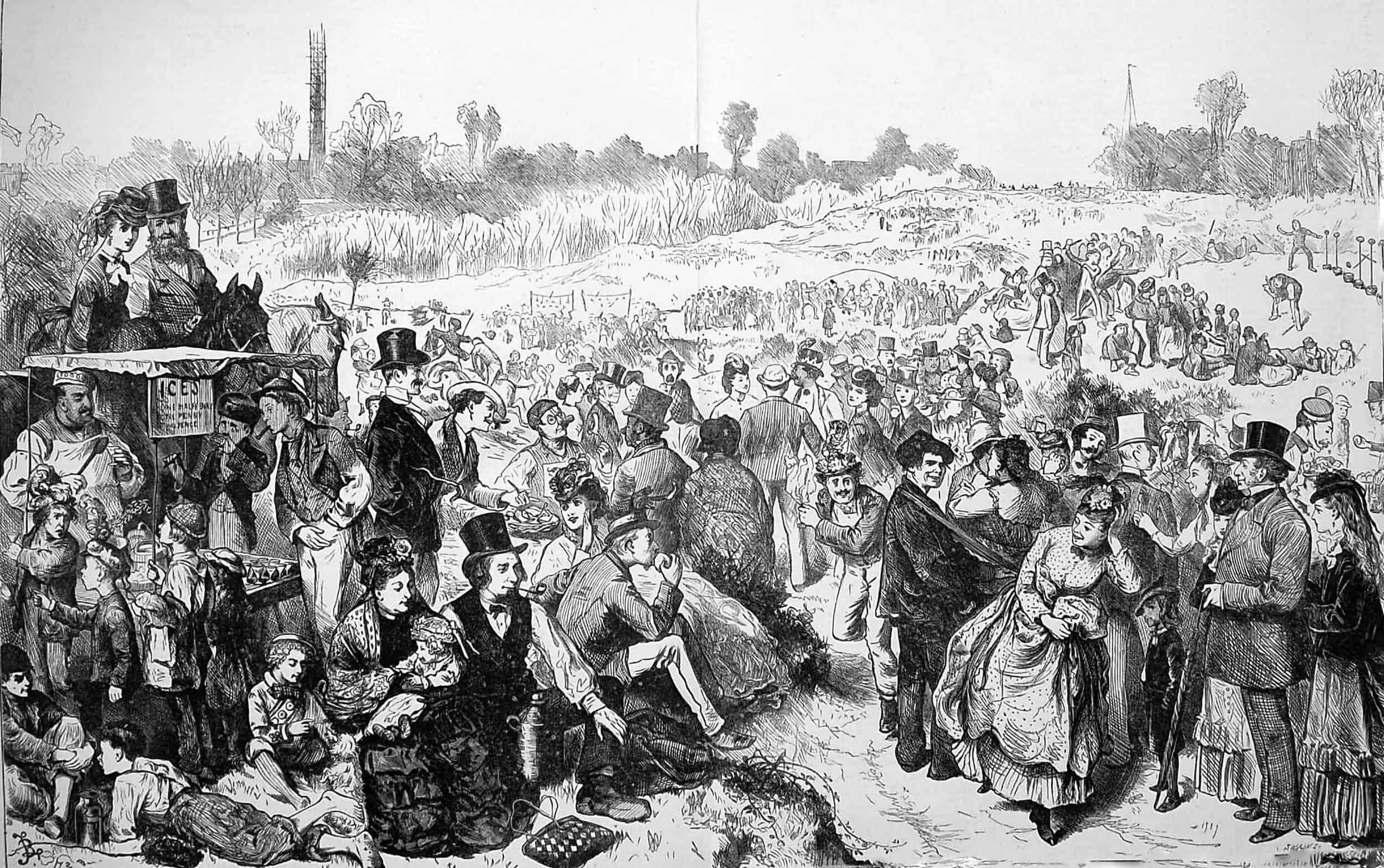
1872. Ice creams on Hampstead Heath.

1880. Holiday time on Hampstead Heath.
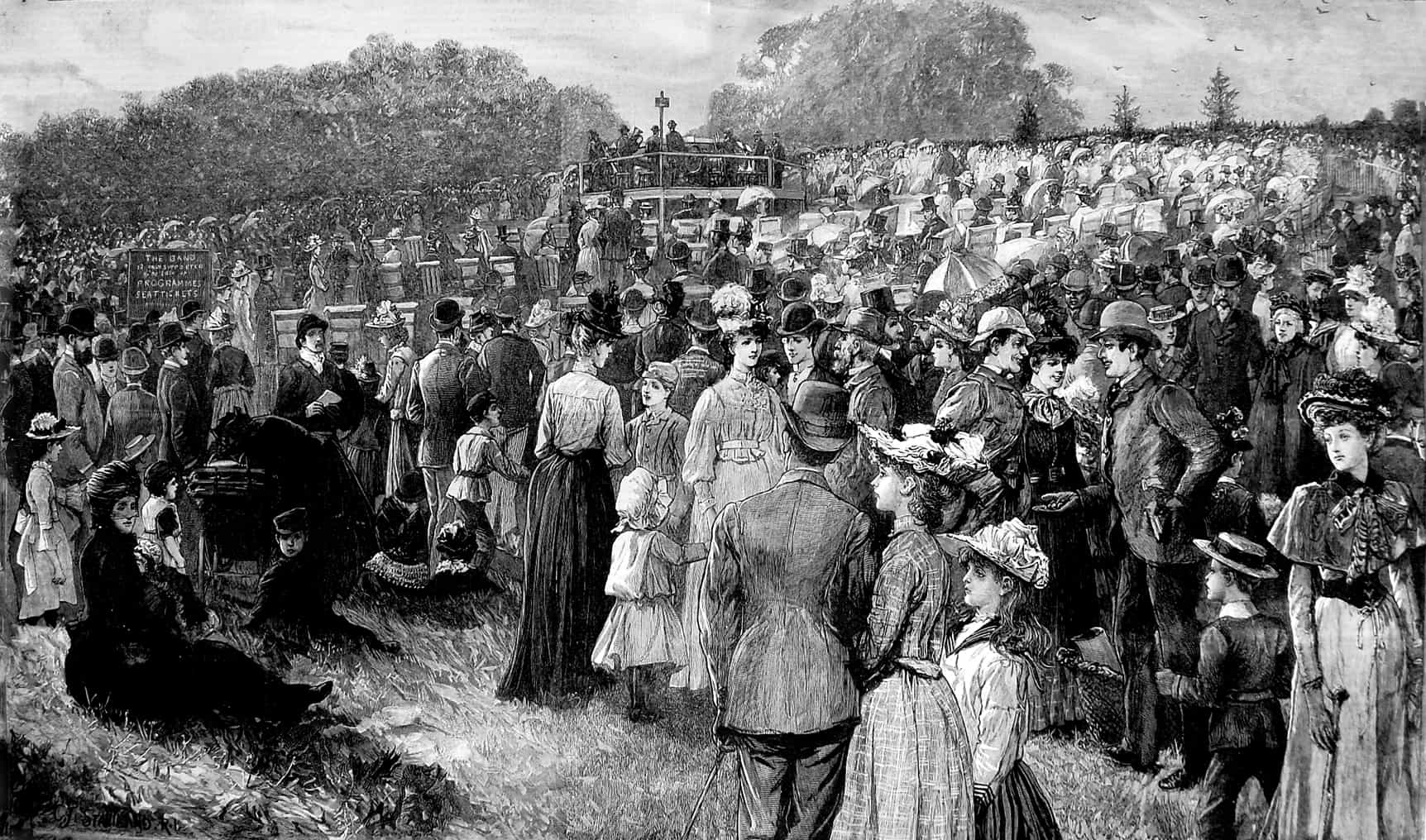
1891. Hampstead Heath Band Stand on a summertime bank holiday.

1892. Ladies at Hampstead Heath Fair.
This is the earliest photograph if have of people enjoying the fairs on the Heath. Unfortunately it’s also the year of the 1892 stampede disaster, so hopefully none of these women were among those who died..

1892. Newspaper clipping about the stampede.
Imagine if we still reported the news like this..!
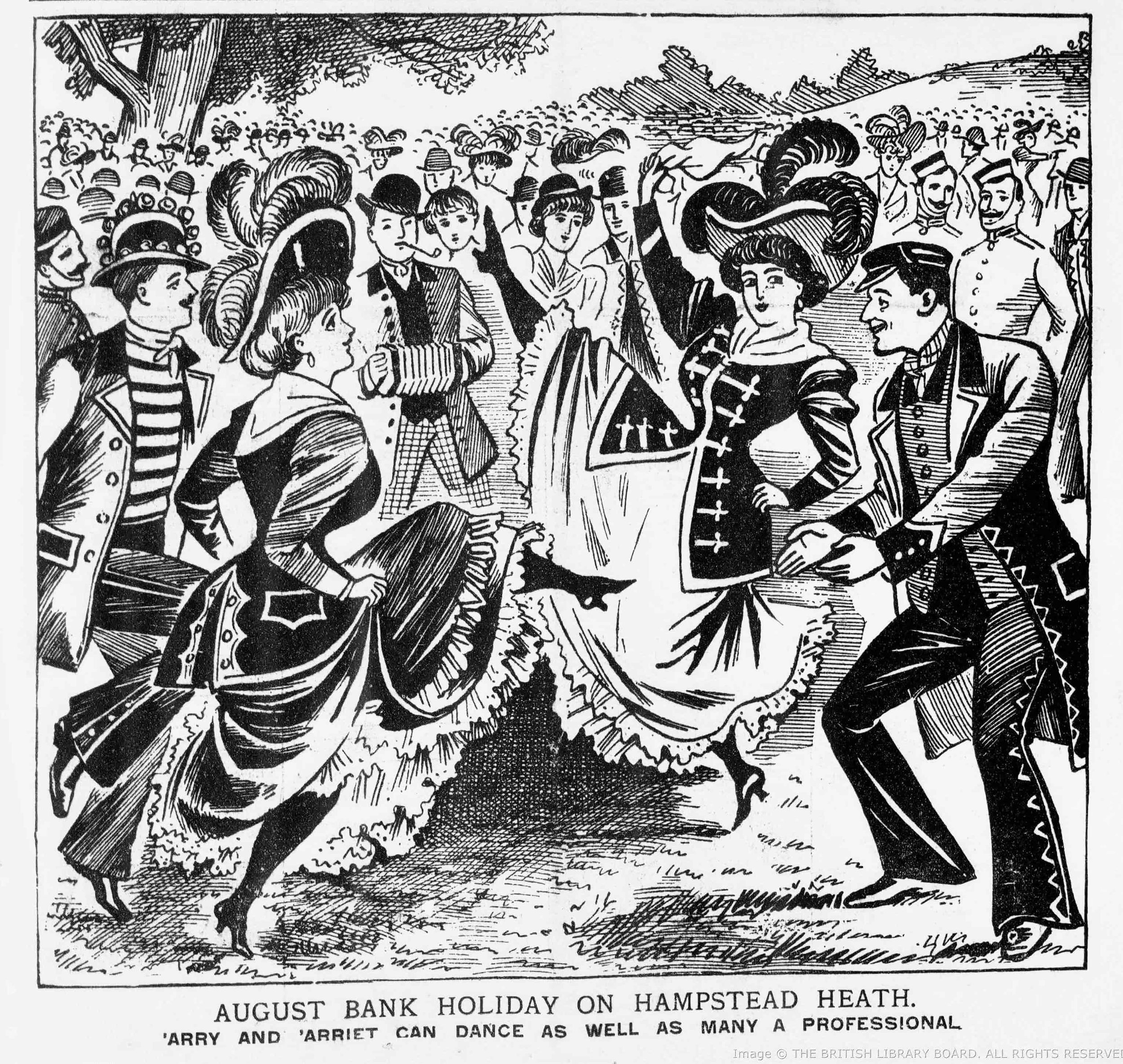
1898, on the August Bank Holiday.
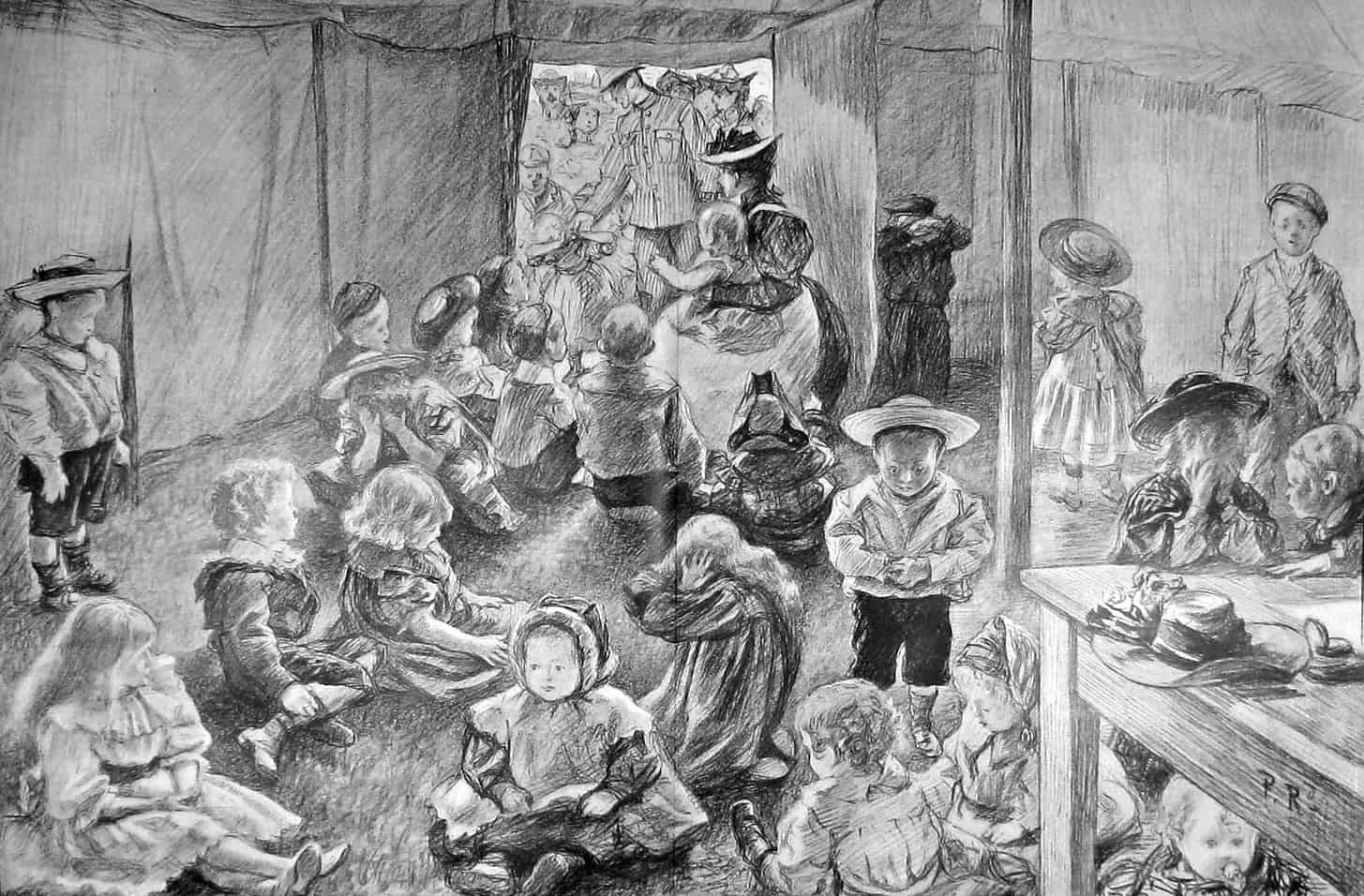
1900. The tent for lost children on a busy Bank Holiday.

Painting of the Heath on an August Bank Holiday, by MacMillan in the early 1900s.

This photo taken on the Heath is dated early 1990s, but I presume not a Bank Holiday. It looks too cold?

This image, dated 1902, is titled 'Cockney Resort on Highgate Hill, Bank Holiday in London'
I’m not sure whether we’re looking at stands, or buses? I think probably stands of some kind. If you have more information, let me know!
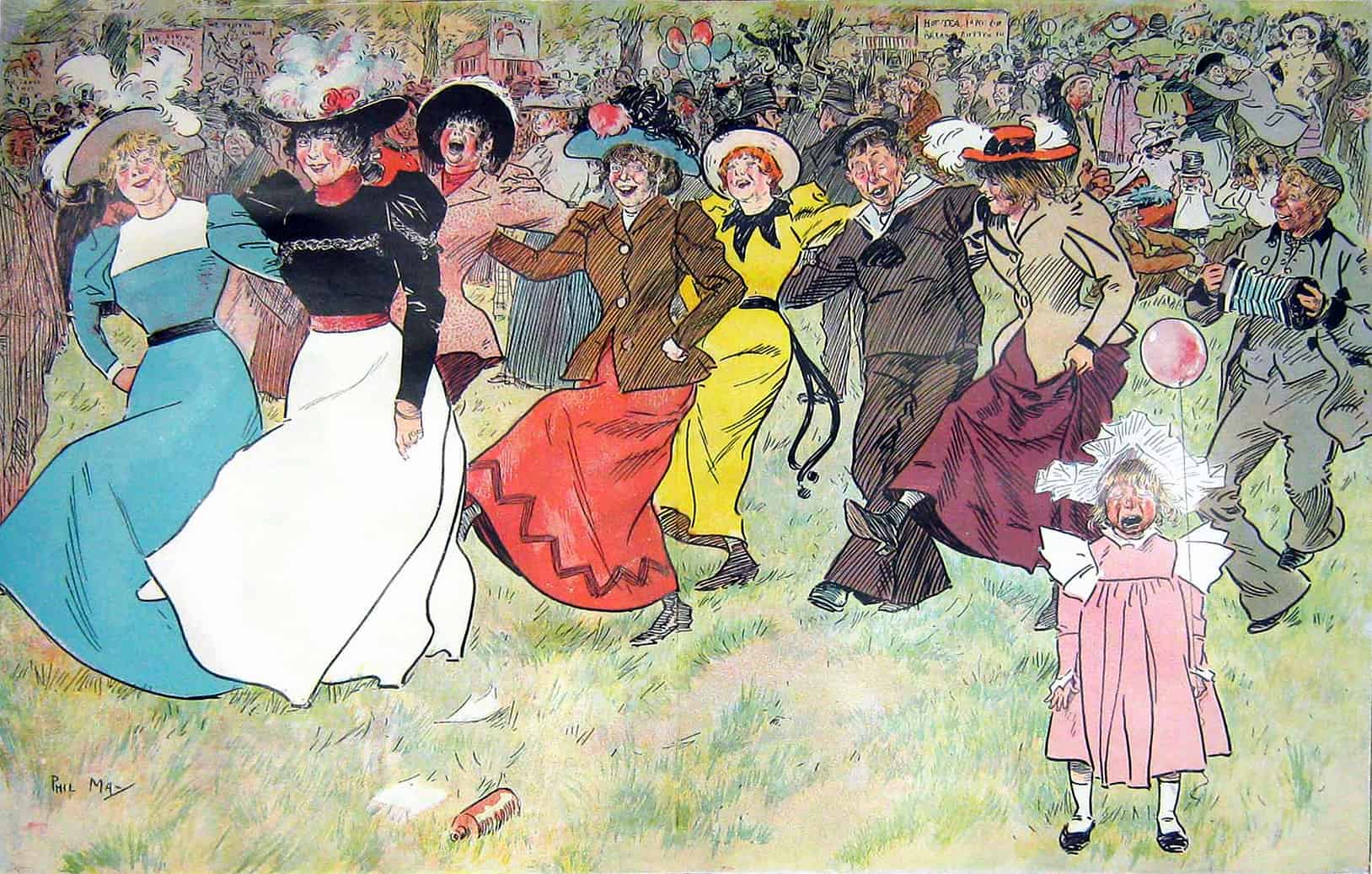
A Cockney Carnival, Bank Holiday on Hampstead Heath. 1902 by Punch cartoonist Phil May.
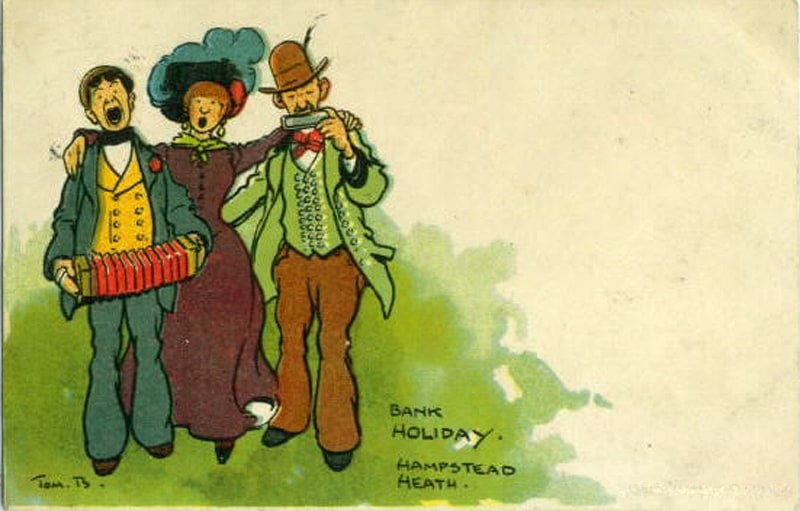
Bank Holiday, Hampstead Heath, by Tom Brown 1904.

1905, Bank Holiday on Hampstead Heath.
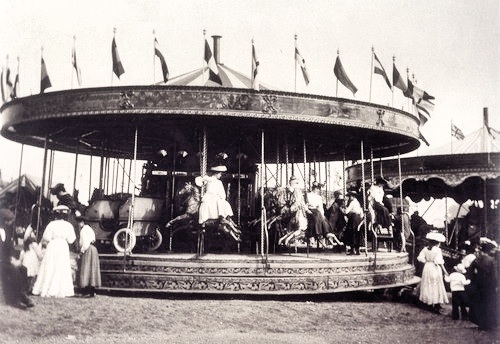
1905, Steam-driven Gallopers, Hampstead Heath Fair.
I didn’t know, until now, that carousels are called Gallopers in fairground speak. Did you?
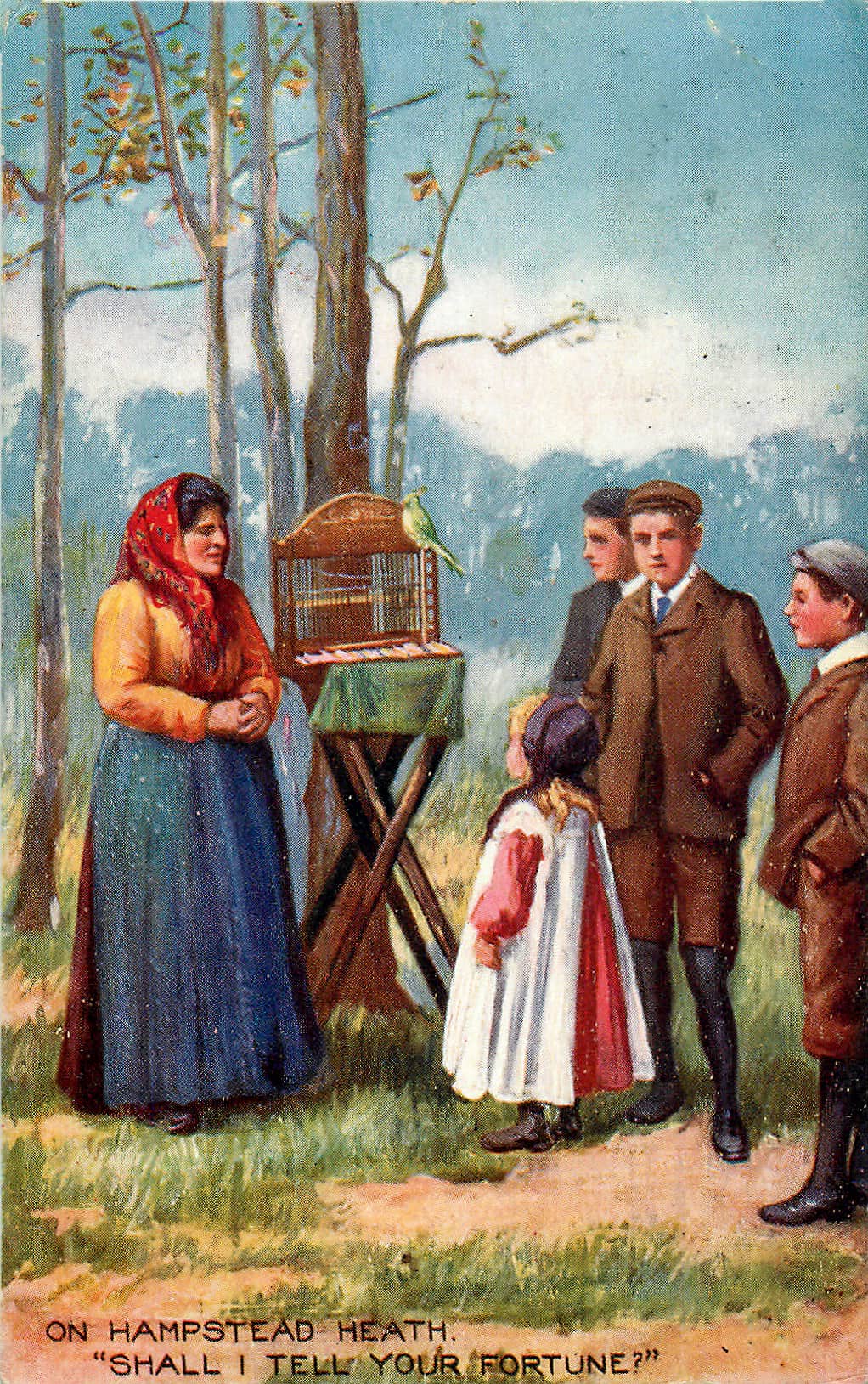
1907. Shall I tell your fortune?
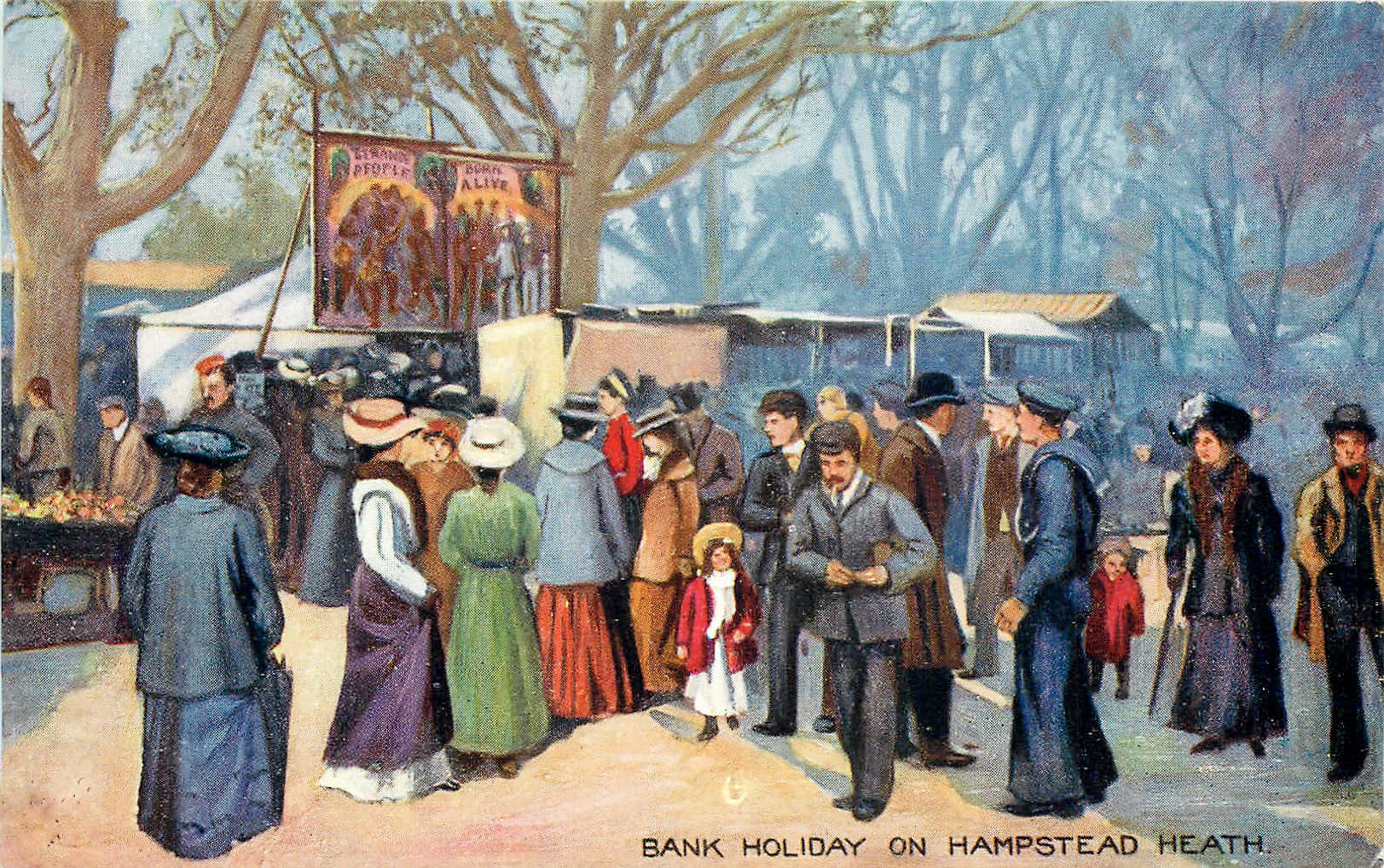
1907, Bank Holiday on Hampstead Heath
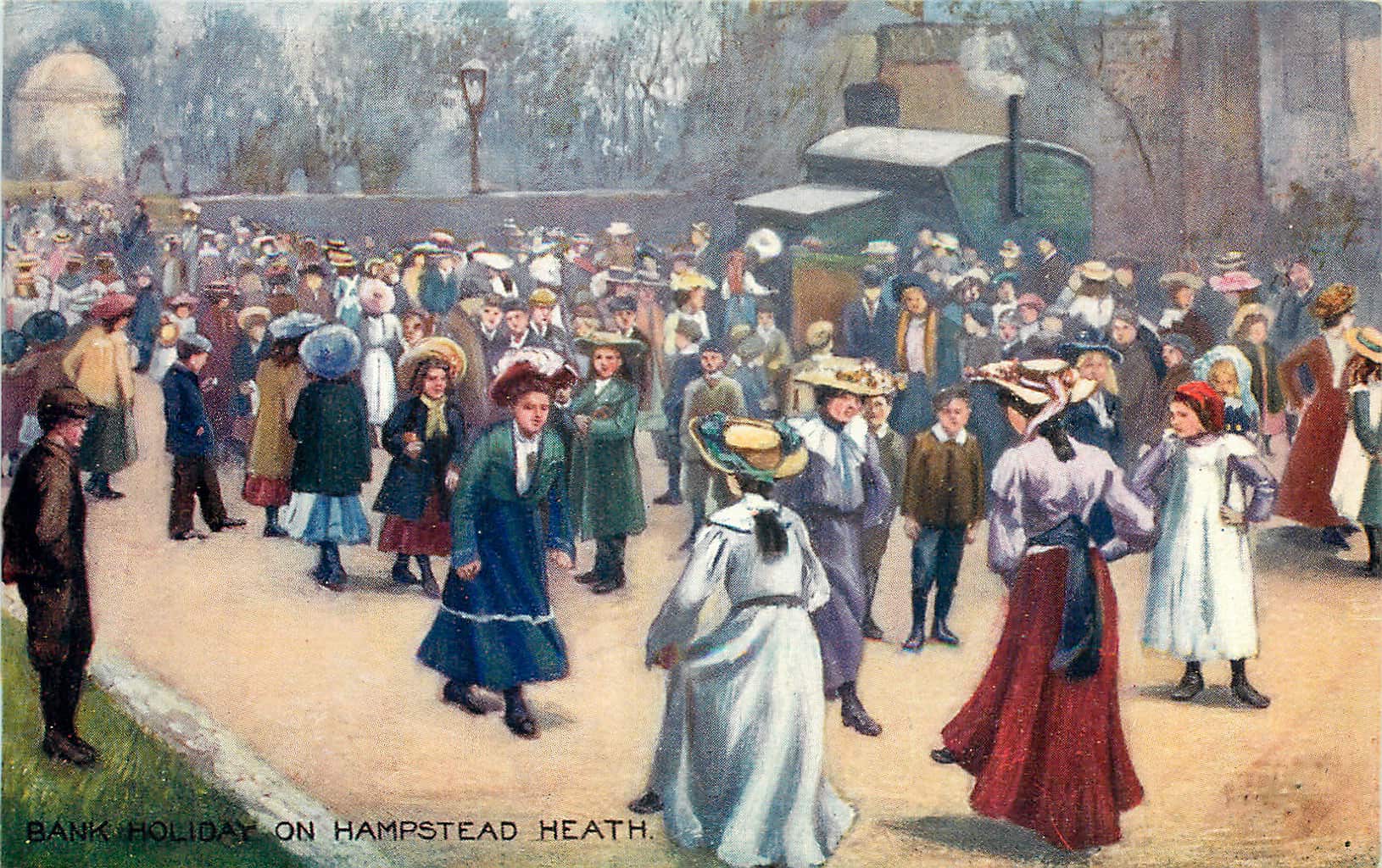
1907, Bank Holiday on Hampstead Heath
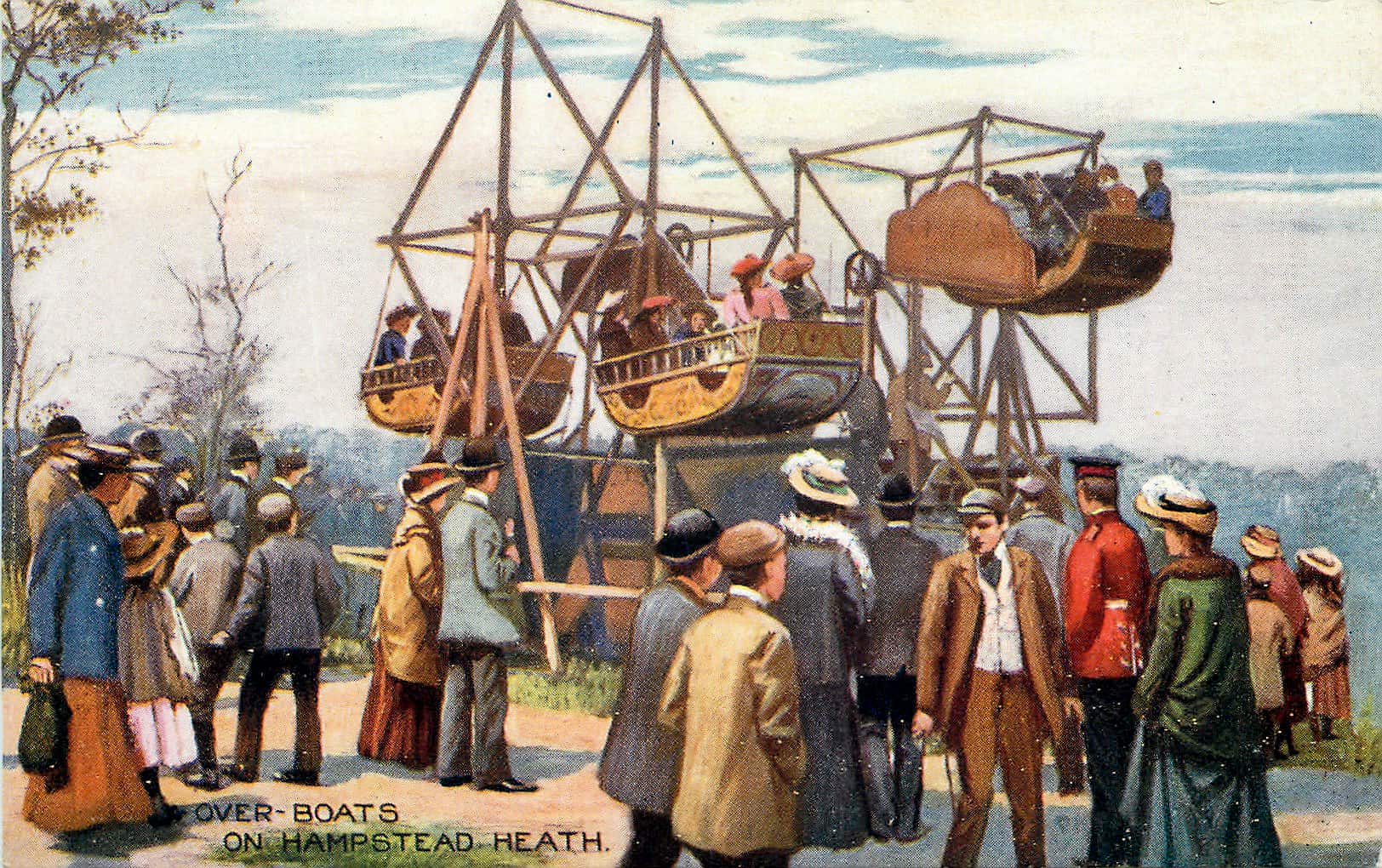
1907, Over-boats on the Heath
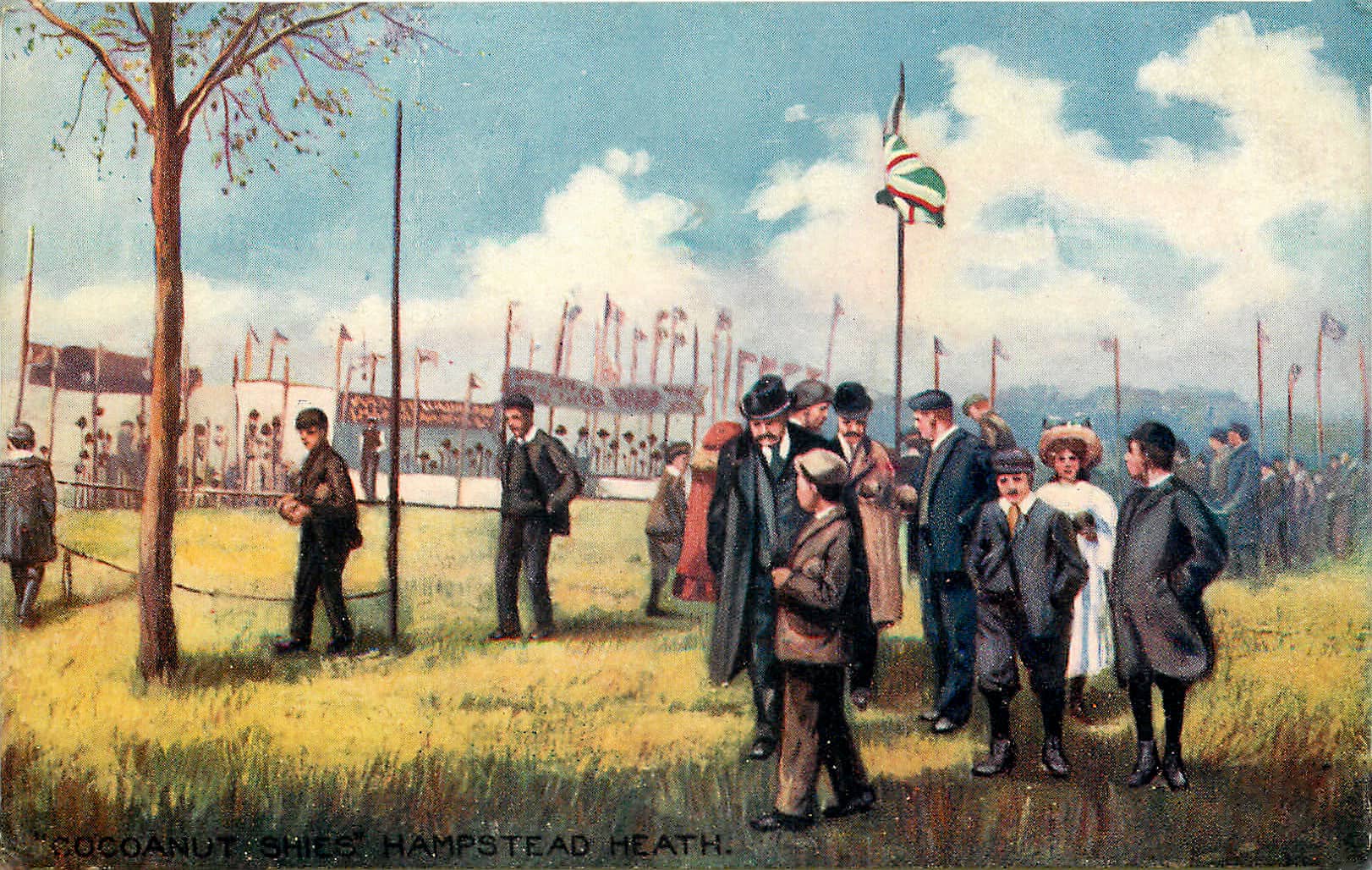
1907, Coconut shies on the Heath
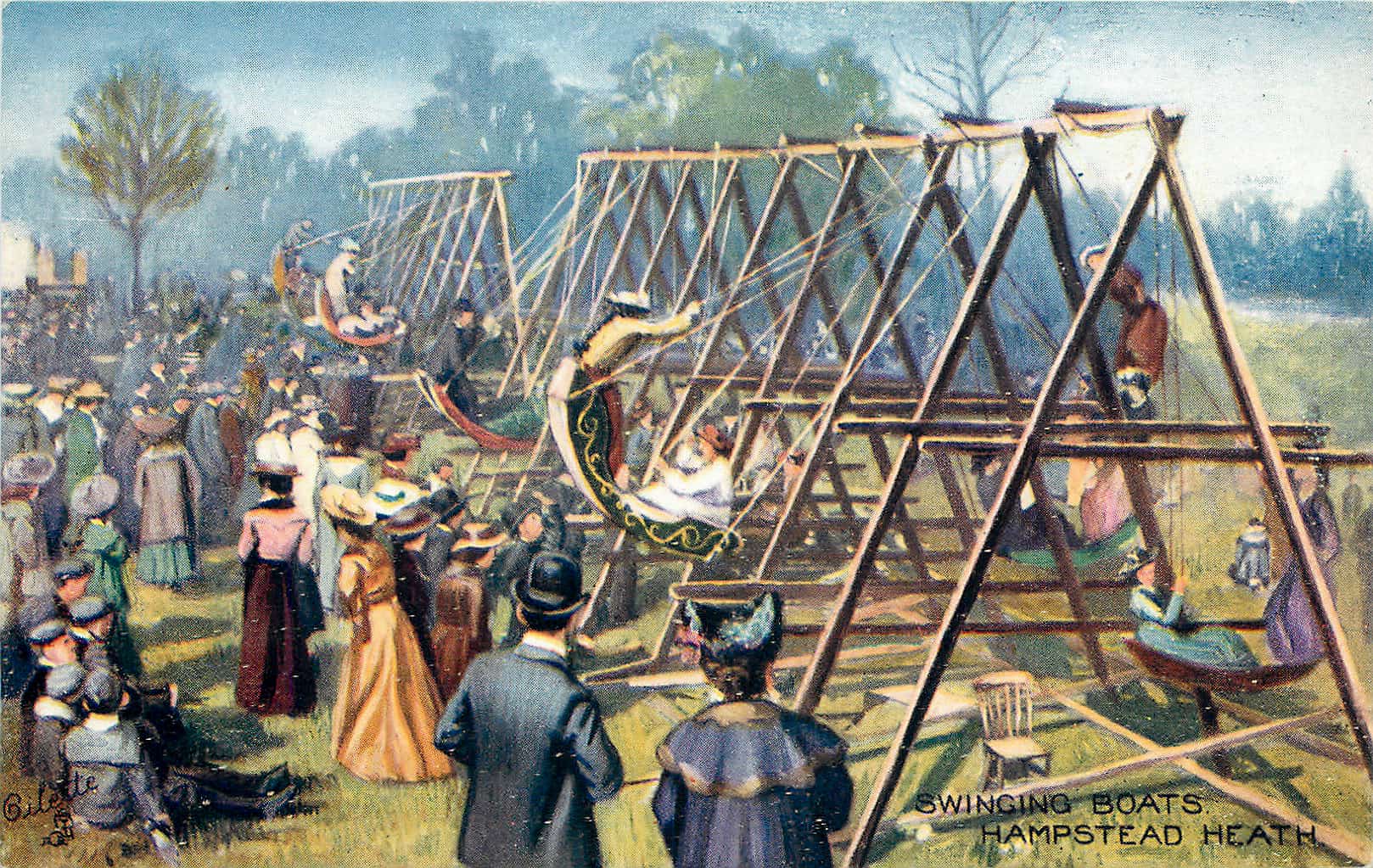
1907, Swinging boats

1907, A donkey boy on East Heath Road
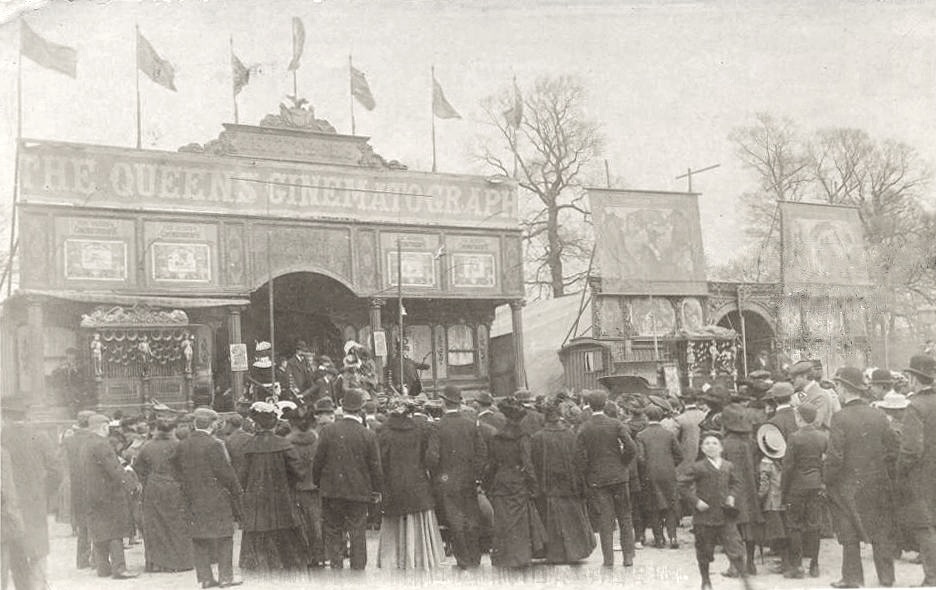
1909, the Queens Cinematograph on Hampstead Heath
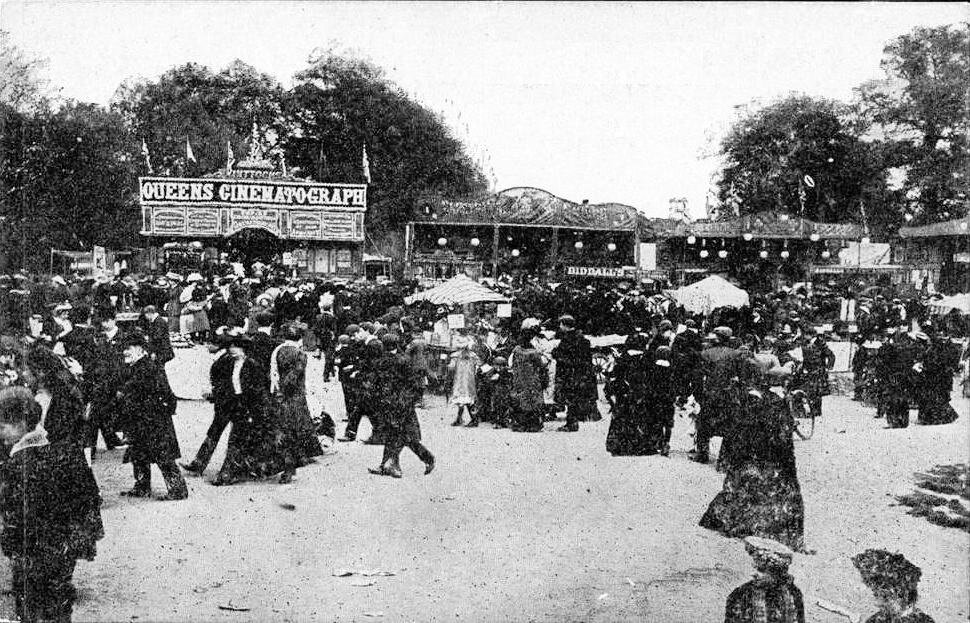
1910, the Queens Cinematograph is back.
This photograph is captioned 'a busy spot on Hampstead Heath’.
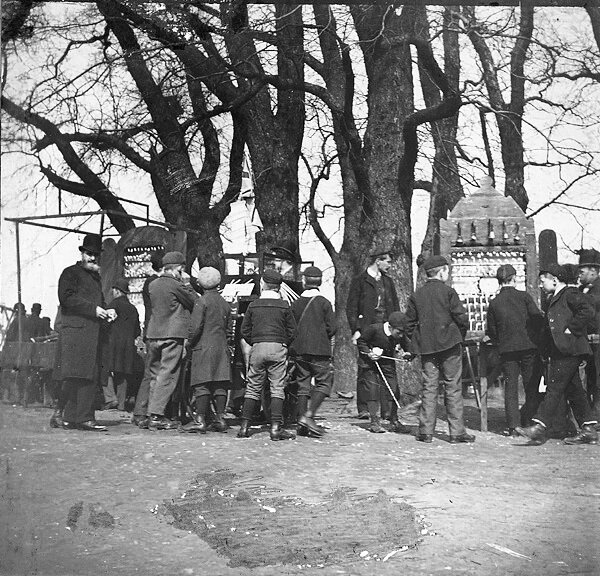
Hampstead Heath in 1910.
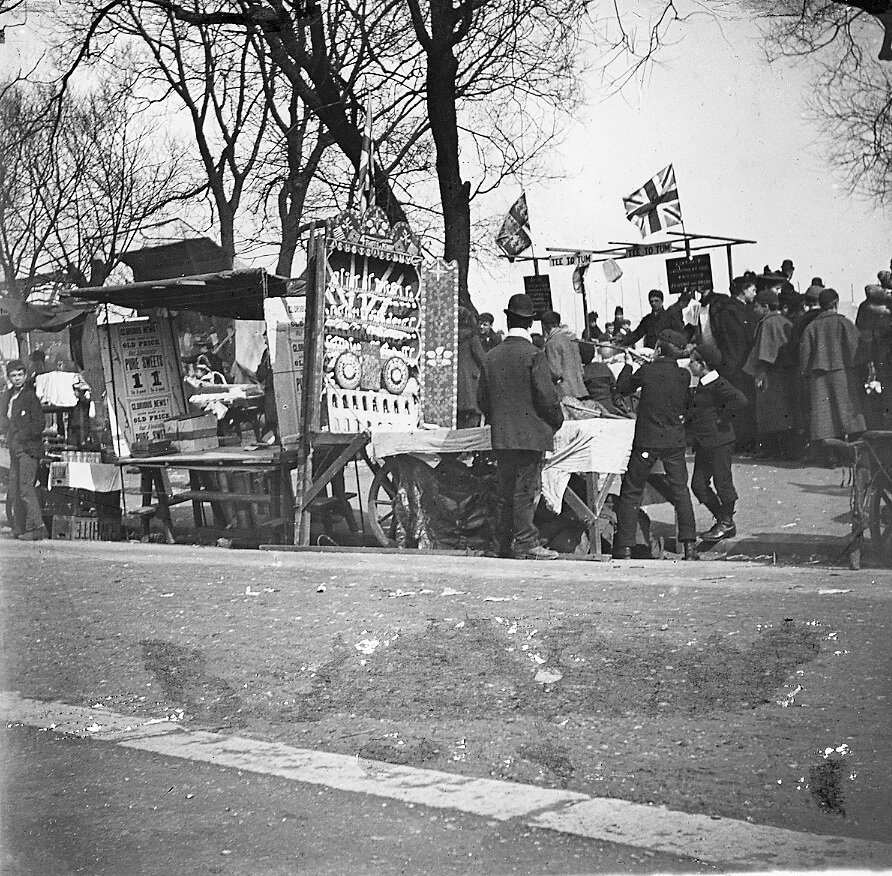
1910 on the Heath.
The caption for this just says Hampstead Heath, and the year. I think these boys in the middle are shooting at the board. Do you think the ‘Tee to Tum’ stall in the background is golf related?

1910, Hampstead Heath.
I can’t tell what they’re gathering around, in this one. Can you?
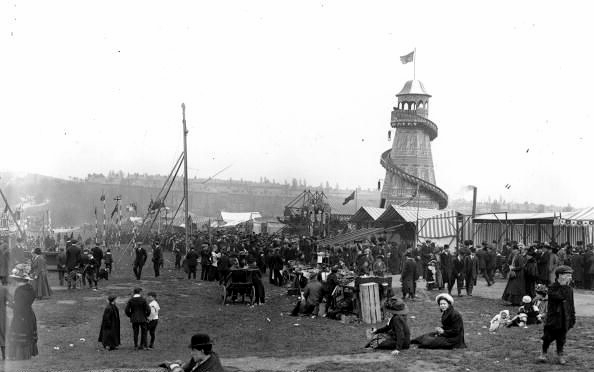
1912, Hampstead Fair
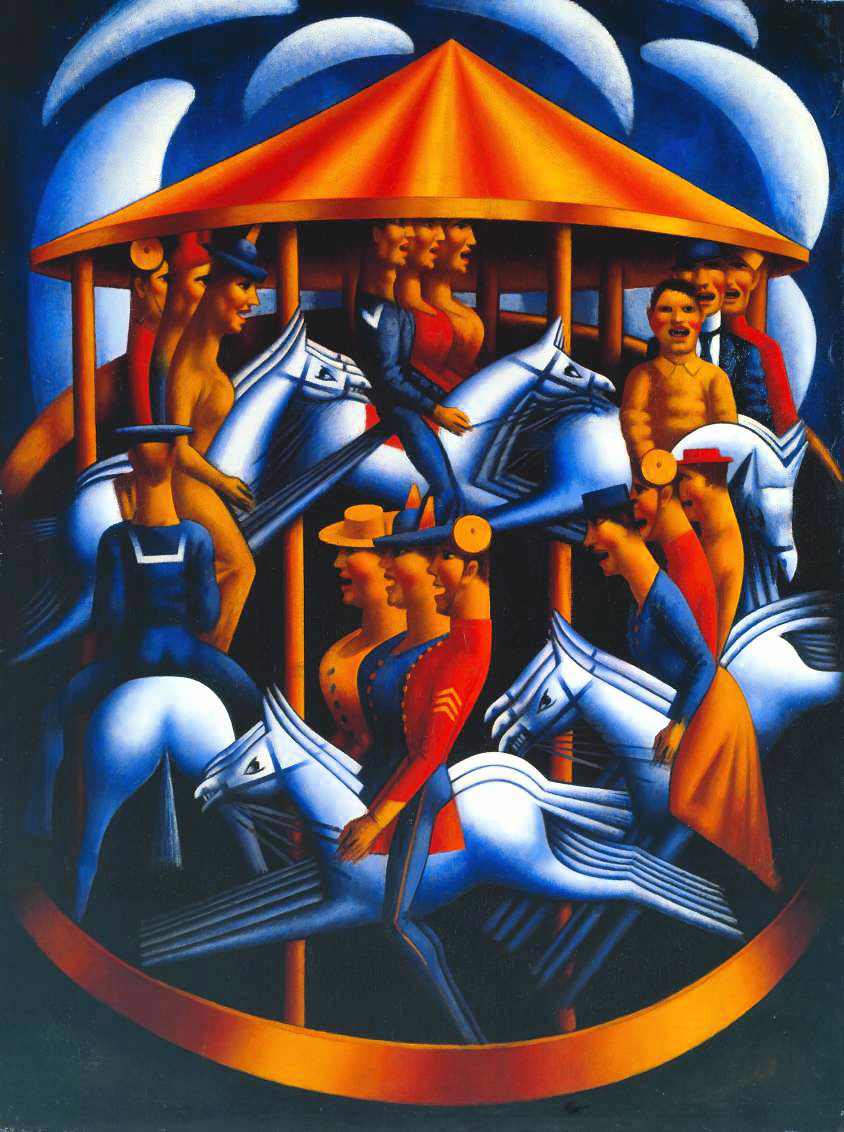
1916, Merry Go Round by Mark Gertler.
Gertler lived near the Heath from the winter of 1914-15. On 15th September 1915, the writer D.H. Lawrence described a special fair on the Heath: 'There is a fair on behalf of the wounded soldiers today, and myriads of the wounded, in their bright blue uniforms and red scarves, and bands, and swing boats, and a whole rowdy enjoyment. It is queer.' The roundabout at the fair is thought to have been the inspiration for this painting.
The painting was begun by May 1916, and finished by the following autumn. It is understood today as an expression of horror at the war, but at the time it was seen as a provocative example of modernity in art, and no more than a description of a fun fair. D.H. Lawrence was deeply affected by it. In a letter to Gertler on 9th October 1916, Lawrence wrote:
“Your terrible and dreadful picture has just come. This is the first picture you have ever painted: it is the best modern picture I have seen ... I believe there was something in Pompeian art, of this terrible and soul-tearing obscenity ... I could sit down and howl beneath it like Kot's dog, in soul-lacerating despair. I realise how superficial your human relationships must be, what a violent maelstrom of destruction and horror your inner soul must be ... it would take a Jew to paint this picture. It would need your national history to get you here, without disintegrating you first ... You are twenty-five, and have painted this picture - I tell you, it takes three thousand years to get where this picture is - and we Christians haven't got two thousand years behind us yet.”
Gertler had written to his patron Edward Marsh in the preceding summer: 'I am I believe what you call a "passivist". I don't know exactly what that means, but I just hate the war'.
This is an extract from the Tate. Read the full details here.


1916, wartime fair on Hampstead Heath.

1919, Hampstead Heath Fair on the August Bank Holiday
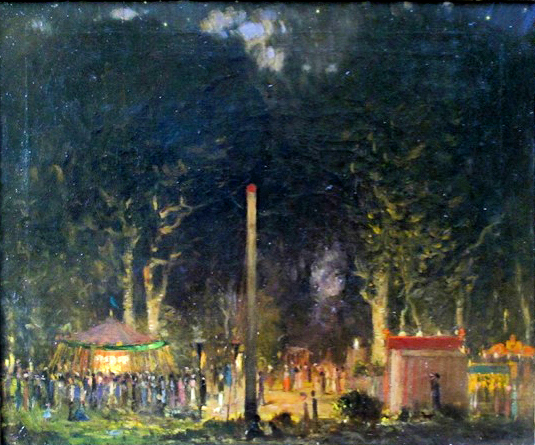
Hampstead Heath Fair by Louis Sargent
Louis Sargent lived from 1881 - 1965. If you know when this painting dates from, or have more details about it, please get in touch.

June 1919, Whitmonday holiday on Hampstead Heath.
Newspaper clipping from The Sphere.

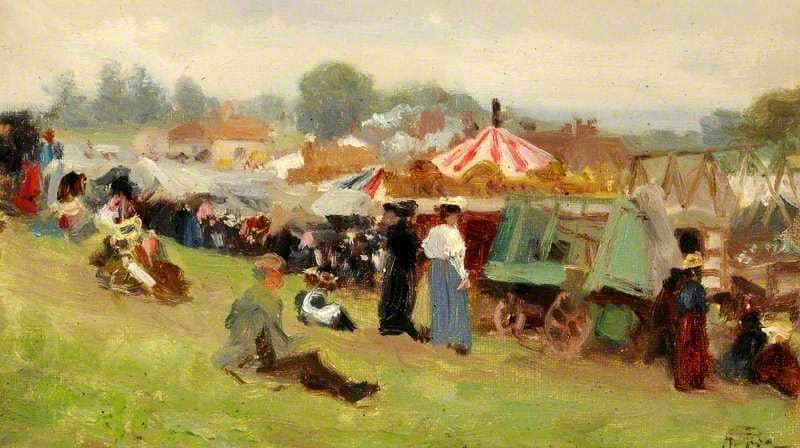
Hampstead Heath by Alberto Pisa
Alberto Pisa (1864 - 1936) was an Italian artist. This painting of a fair on Hampstead Heath is one of only two he painted in the UK. It’s not clear when this was painted, but at the latest it was the 1920s, as the painting was gifted to Museums Sheffield in 1929.

1920s, Easter Fair on Hampstead Heath

Hampstead Fair by George Sheringham (1886-1937), painted around 1900
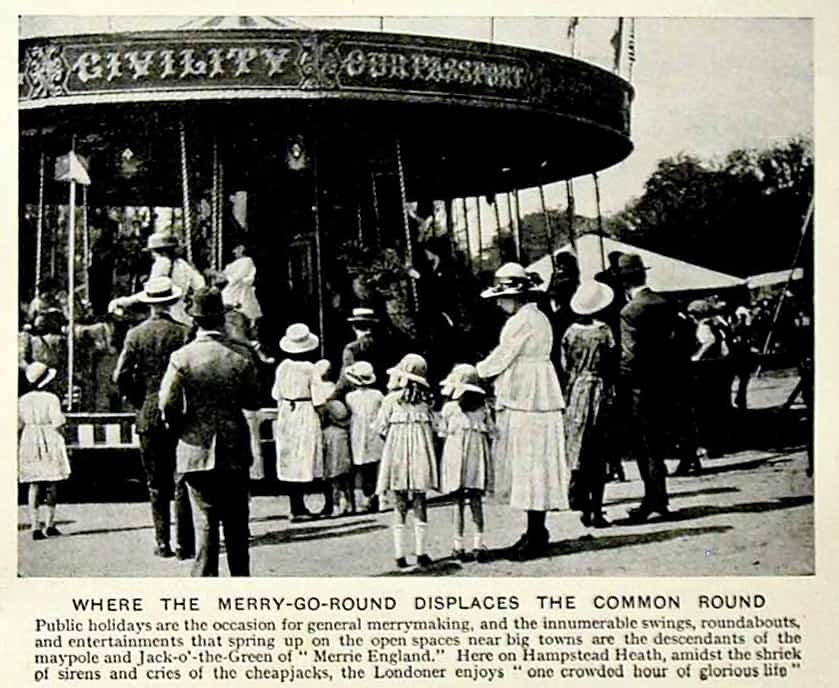
1920s newspaper clipping about public holidays on the Heath
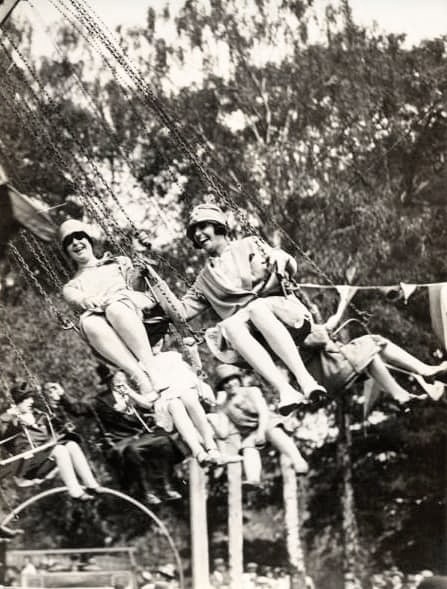
1920s Hampstead Heath Fair
I love how much joy shows on this lady’s face!

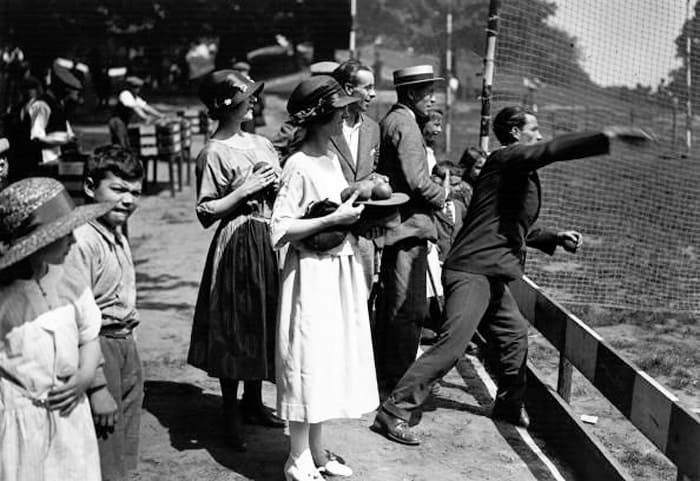
1922, coconut shy on Hampstead Heath fair
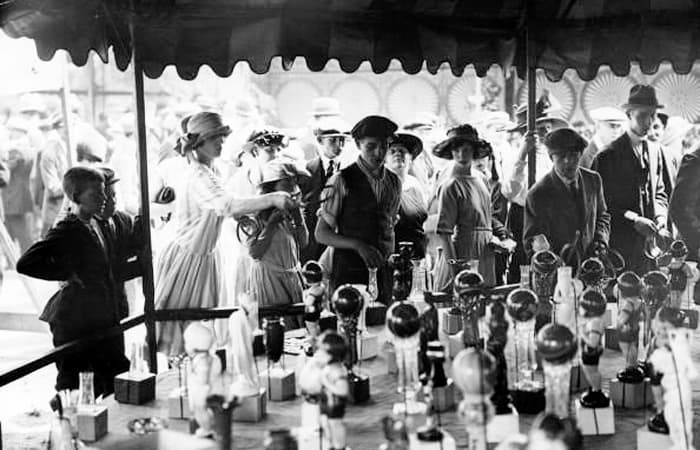
1923, Hampstead Heath Fair

1924, Lost kids on the Heath newspaper snippet.
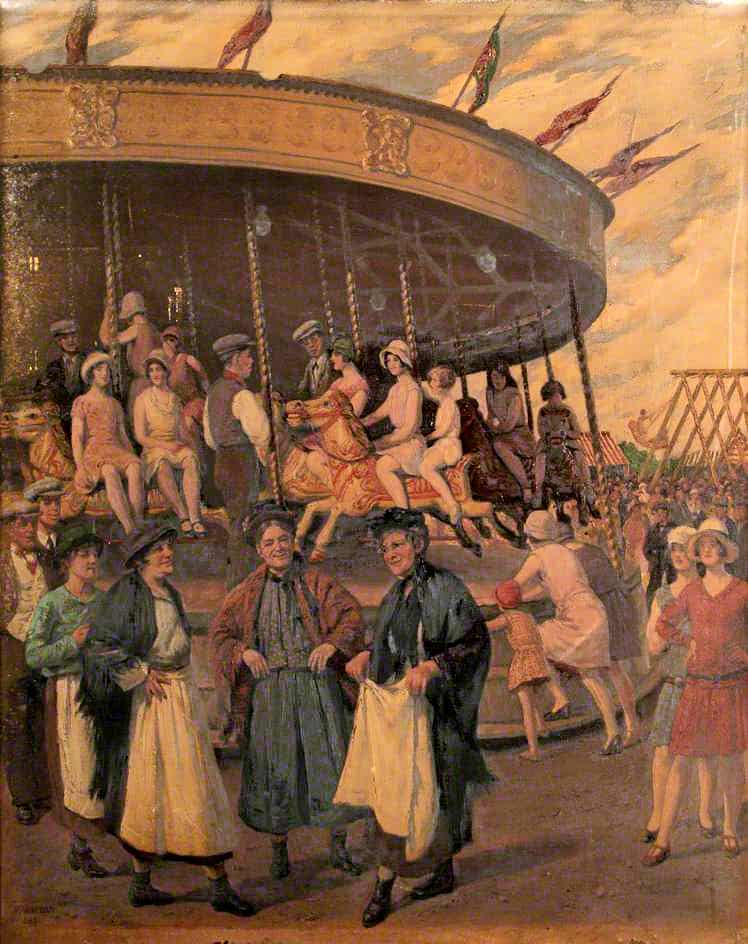
1925, Hampstead Heath Fair by Frederick Dudley Walenn


1925, Hampstead Heath fair
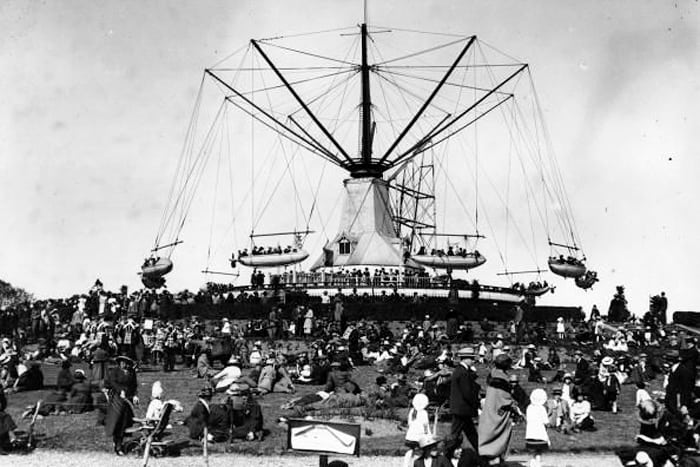
1925, Hampstead Heath Fair
This looks incredible, doesn’t it?! I wonder if the cars swing out when it spins?
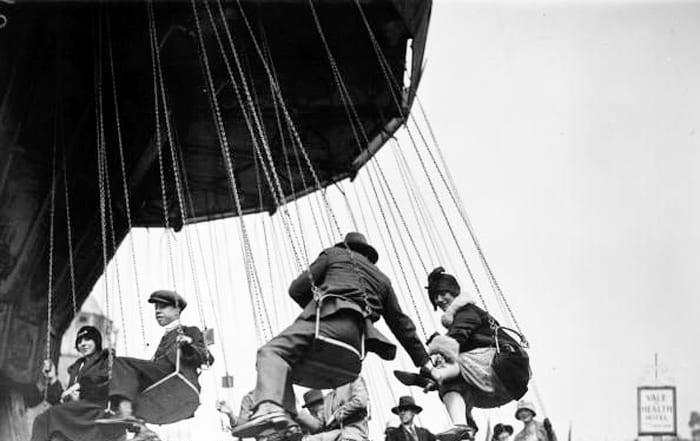
1926, Hampstead Heath fair
This looks to be dated 24th May, and in the bottom left corner there you can just about make out that it says Vale of Health
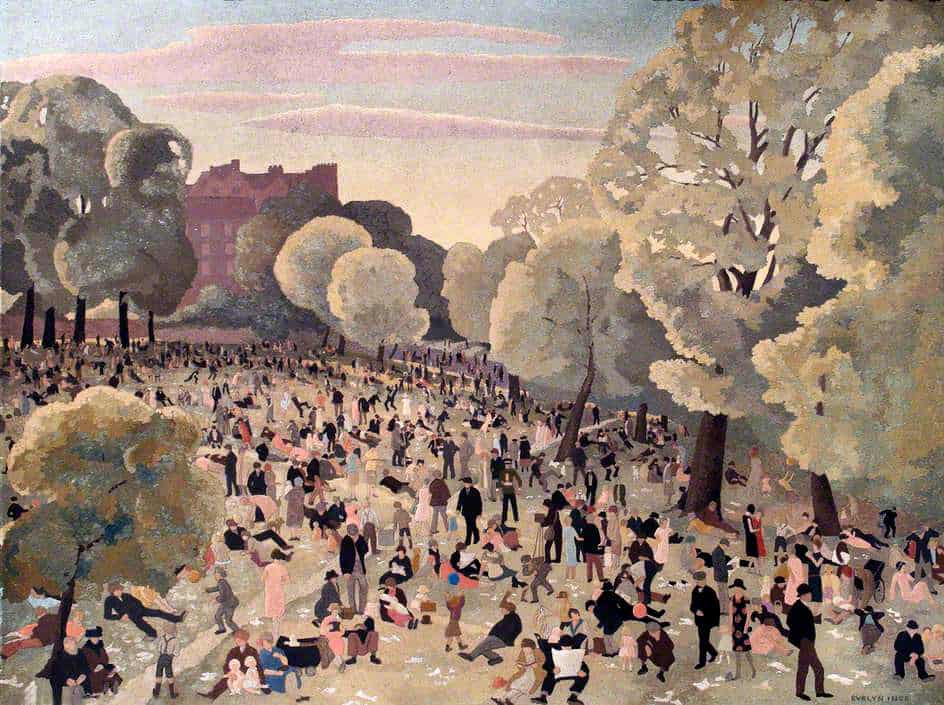

1927, A rainy Bank holiday on Hampstead Heath

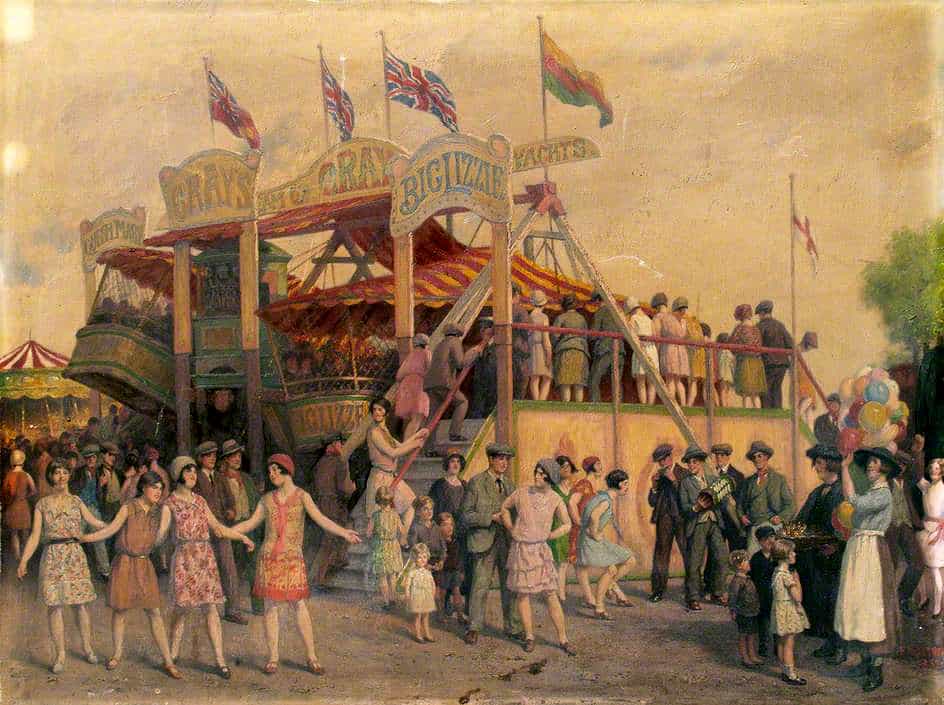
1932, Hampstead Heath fair by Frederik Dudley Walenn
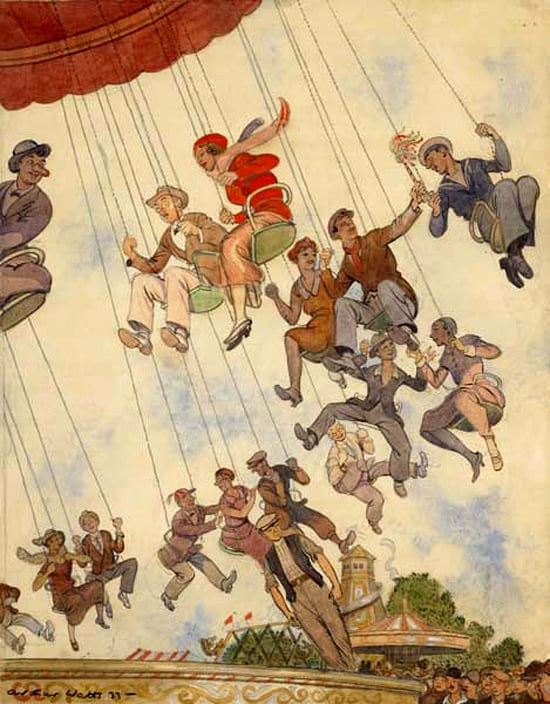
1933, Heath Fair by Arthur Watts

1933 newspaper clipping about Bank Holidays

1934, Vale of Health Fair by George Chalton

‘Cor Blimey, the Fan Dancer’, Hampstead Heath Fair, by Wolfgang Suschitzky 1934
Wolfgang Suschitzky (August 1912 – October 2016) was a documentary photographer, as well as a cinematographer perhaps best known for his collaboration with Paul Rotha in the 1940s and his work on Mike Hodges' 1971 film Get Carter.
Andrew Pulver described Suschitzky in 2007 as "a living link to the prewar glory days of the British documentary movement." Steve Chibnall writes that Suschitzky "[developed] a reputation as an expert location photographer with a documentarist's ability to extract atmosphere from naturalistic settings." His photographs have been exhibited at the National Gallery, the Austrian Cultural Forum in London and The Photographer's Gallery, and appear in many international photography collections. He was the father of cinematographer Peter Suschitzky (born 1941), classical musician and writer Misha Donat, and Julia Donat.
This biography is from Wikipedia under an Attribution-ShareAlike Creative Commons License. Read the full Wikipedia entry here.
Image source: the Tate.
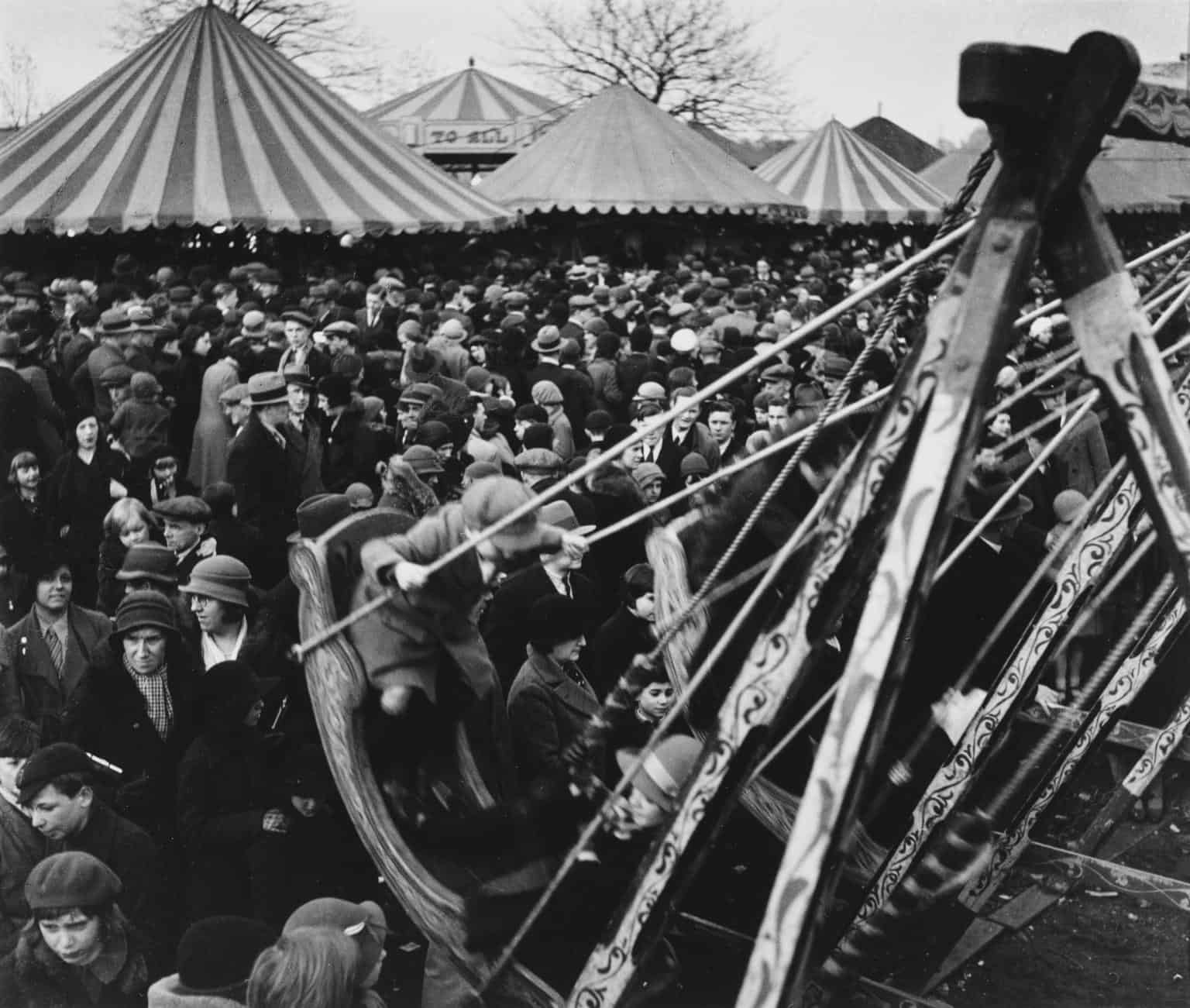
Hampstead Heath Fair, Wolfgang Suschitzky, 1934
Wolfgang Suschitzky (August 1912 – October 2016) was a documentary photographer, as well as a cinematographer perhaps best known for his collaboration with Paul Rotha in the 1940s and his work on Mike Hodges' 1971 film Get Carter.
Andrew Pulver described Suschitzky in 2007 as "a living link to the prewar glory days of the British documentary movement." Steve Chibnall writes that Suschitzky "[developed] a reputation as an expert location photographer with a documentarist's ability to extract atmosphere from naturalistic settings." His photographs have been exhibited at the National Gallery, the Austrian Cultural Forum in London and The Photographer's Gallery, and appear in many international photography collections. He was the father of cinematographer Peter Suschitzky (born 1941), classical musician and writer Misha Donat, and Julia Donat.
This biography is from Wikipedia under an Attribution-ShareAlike Creative Commons License. Read the full Wikipedia entry here.
Image source: the Tate.
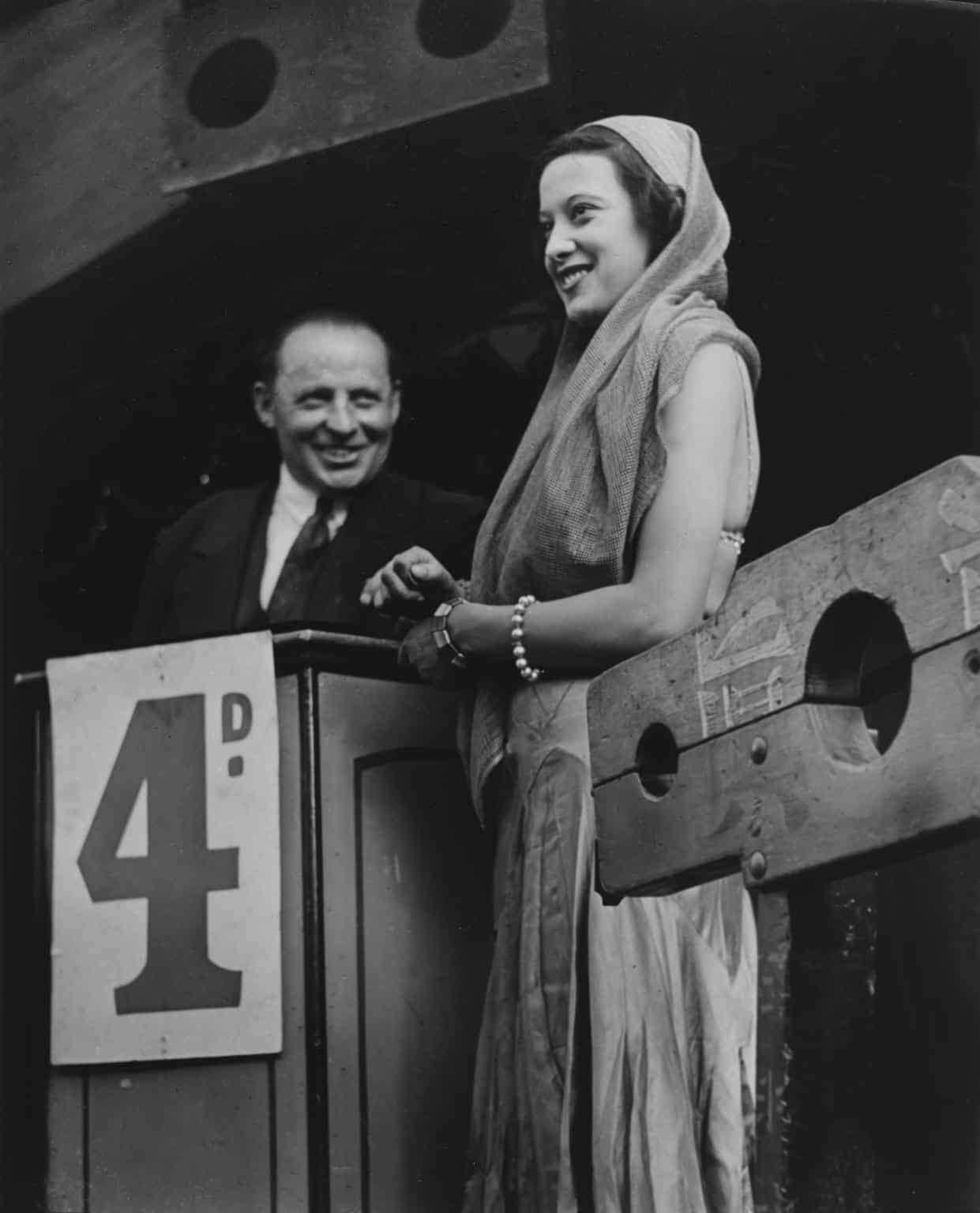
Hampstead Heath Fair, Easter 1934 by Wolfgang Suschitzky
Wolfgang Suschitzky (August 1912 – October 2016) was a documentary photographer, as well as a cinematographer perhaps best known for his collaboration with Paul Rotha in the 1940s and his work on Mike Hodges' 1971 film Get Carter.
Andrew Pulver described Suschitzky in 2007 as "a living link to the prewar glory days of the British documentary movement." Steve Chibnall writes that Suschitzky "[developed] a reputation as an expert location photographer with a documentarist's ability to extract atmosphere from naturalistic settings." His photographs have been exhibited at the National Gallery, the Austrian Cultural Forum in London and The Photographer's Gallery, and appear in many international photography collections. He was the father of cinematographer Peter Suschitzky (born 1941), classical musician and writer Misha Donat, and Julia Donat.
This biography is from Wikipedia under an Attribution-ShareAlike Creative Commons License. Read the full Wikipedia entry here.
Image source: the Tate.
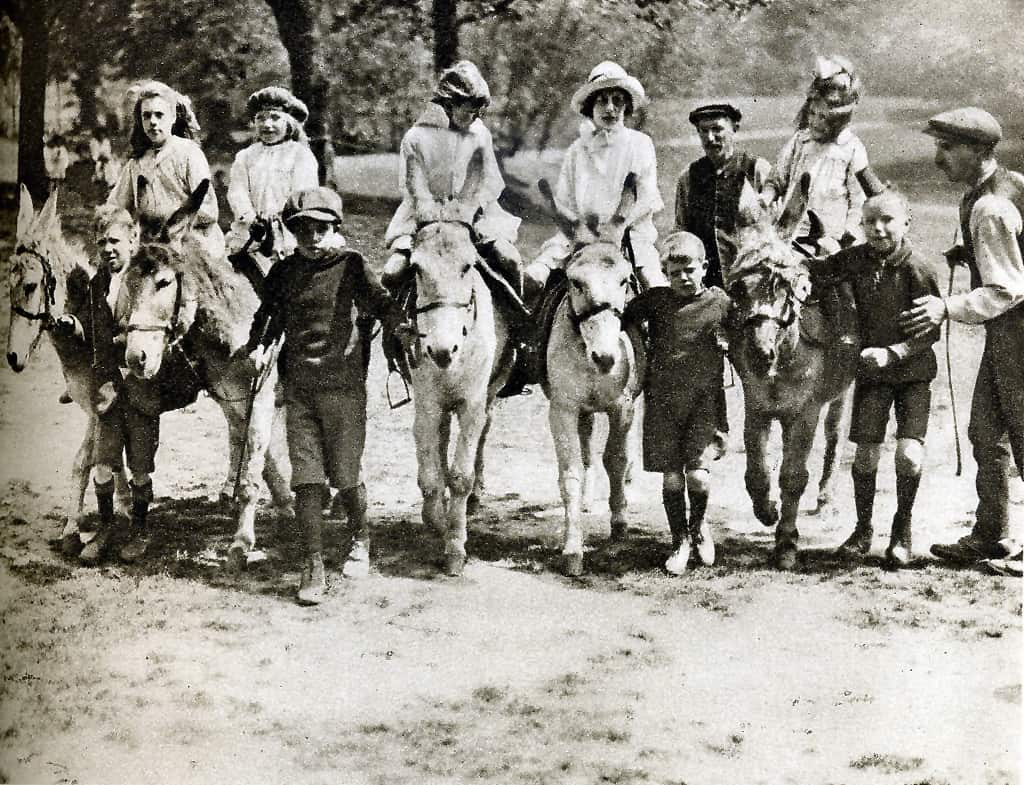
1935, Heath donkey boys and riders

1938, The Vale of Health Fair on Hampstead Heath by Kenneth Shirley Smith
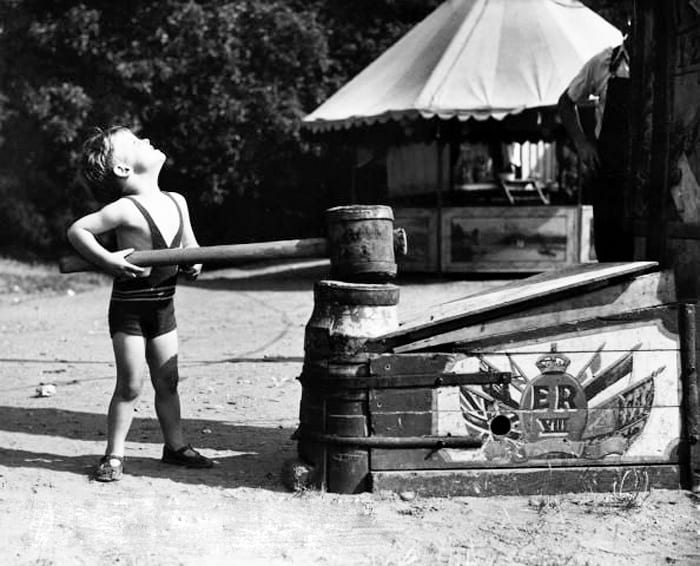
1938, Hampstead Heath fair

1939, Hampstead Heath puppet show, 7th August
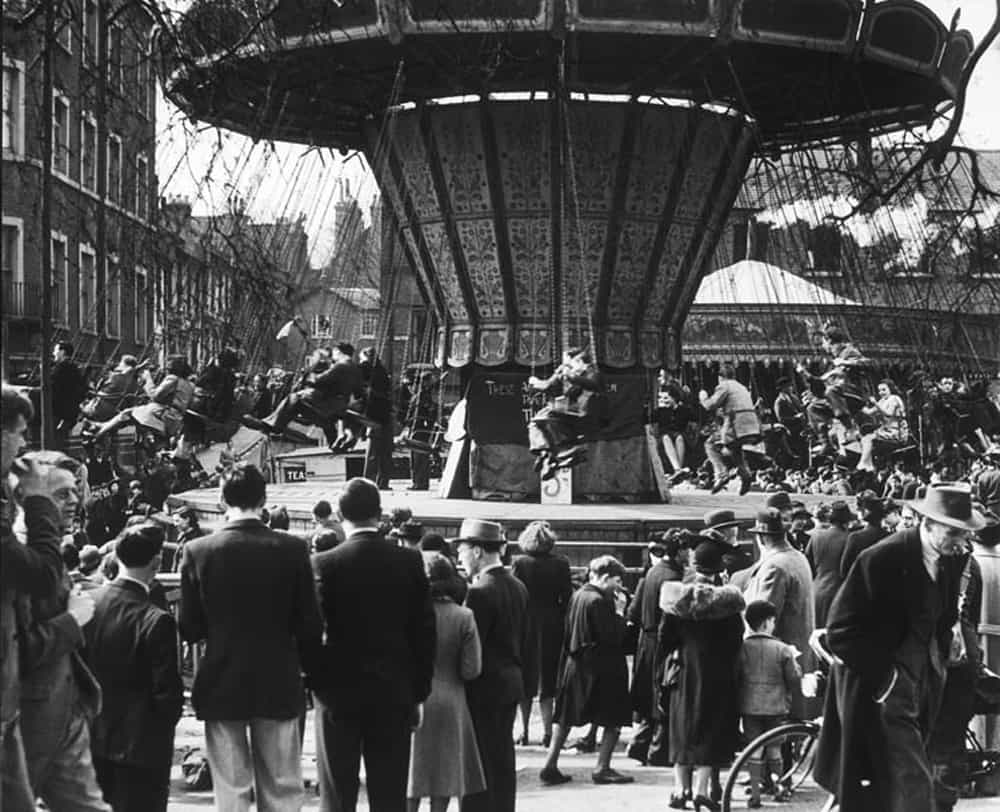
1940, Fairground on the Heath during WW2
If you can work out exactly where this was taken, based on those buildings in the back, please do get in touch


1940, Hampstead Heath fair in wartime
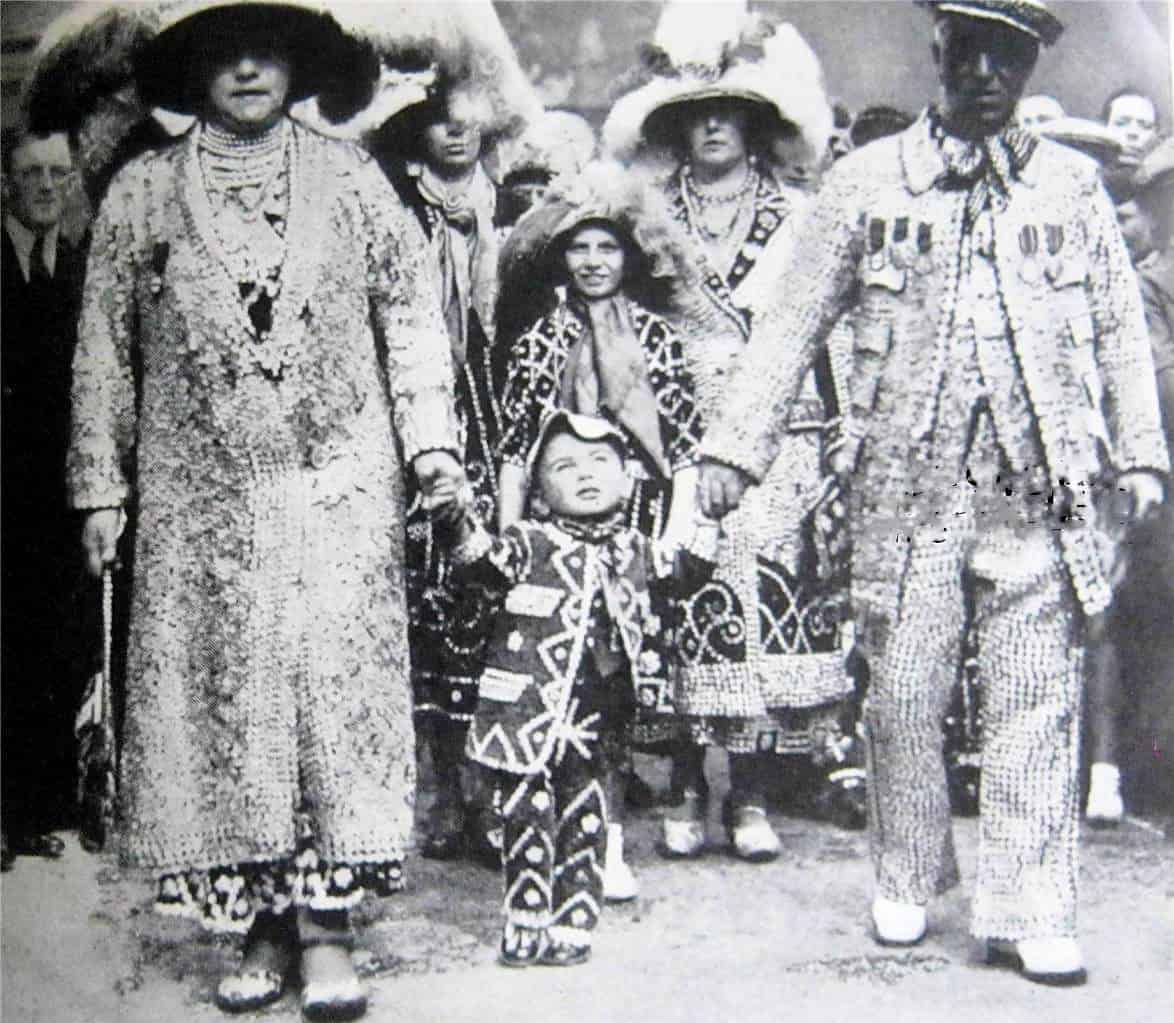
1940s, Pearly Kings & Queens, Hampstead Heath

1941, Hampstead Heath fair in wartime

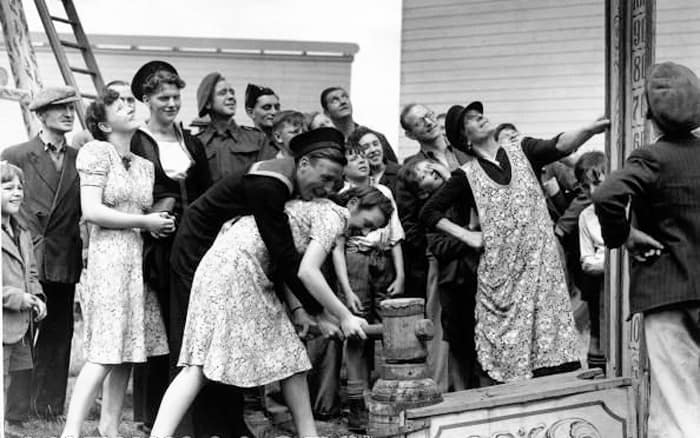
1943, Hampstead Heath fair in wartime

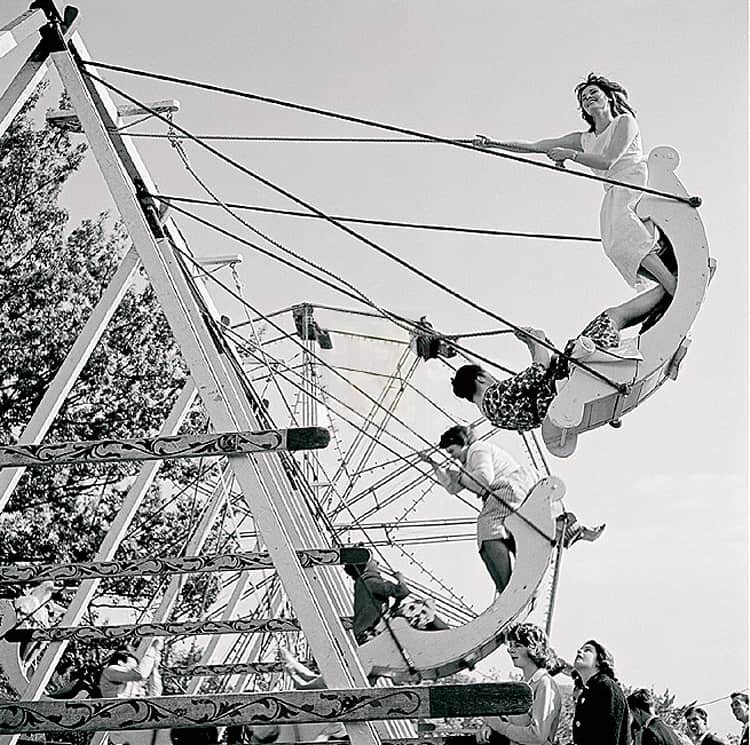
1940s, Swing boats at Hampstead on Whitsun, John Gay
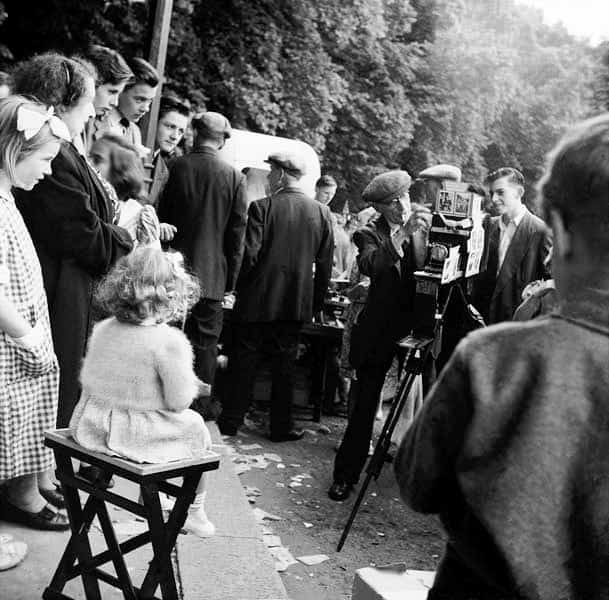
1950s, Hampstead Heath fair

1950s fun fair on the Heath

1950s, Children's 'chair-o-plane' at the Vale of Health fair

1950s, Heath far caravans

1953, Artists at Hampstead Heath fair
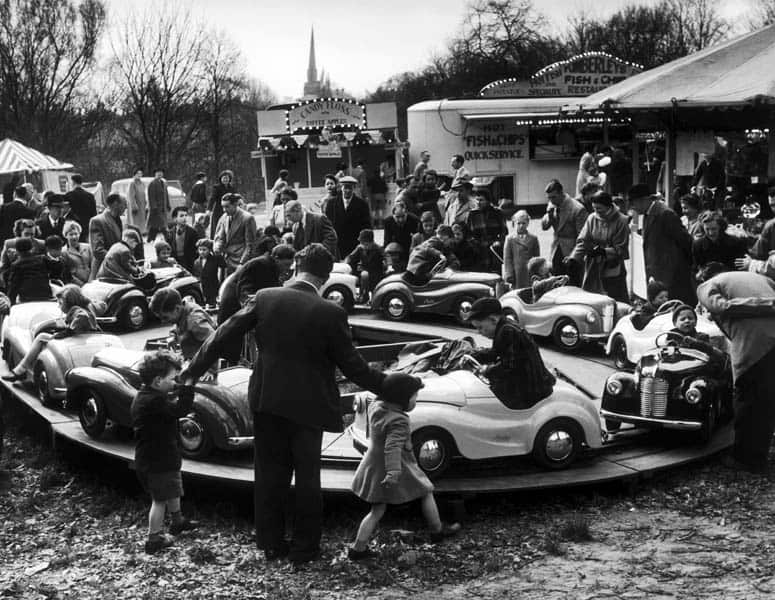
1954, Easter fair
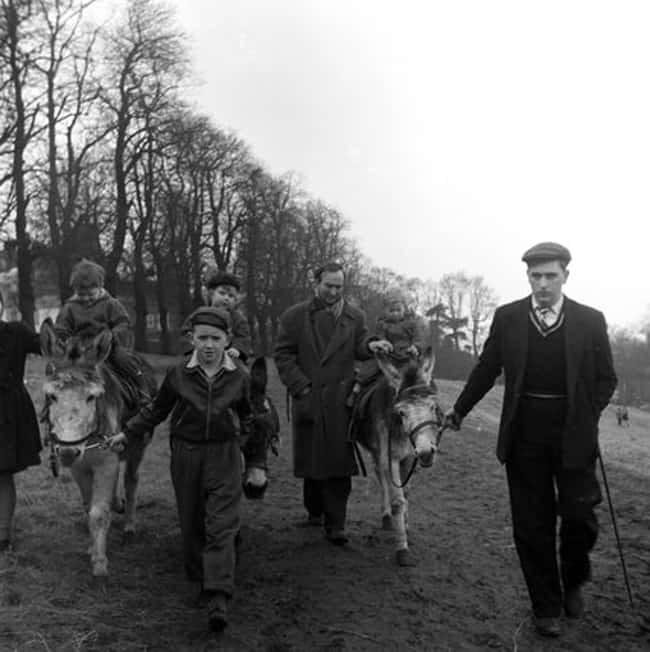
1955, Donkey rides on the Heath

1955, Fair ground worker's caravan, August

1957 - 1963, Coconut shy at the Heath Fair
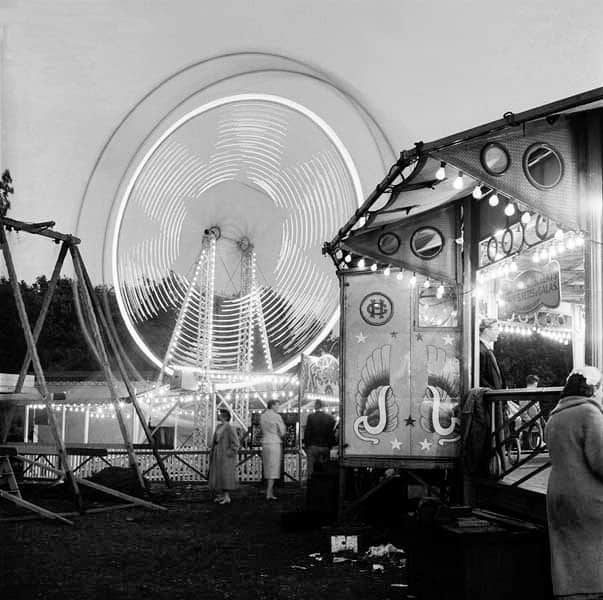
1958, Hampstead Fair
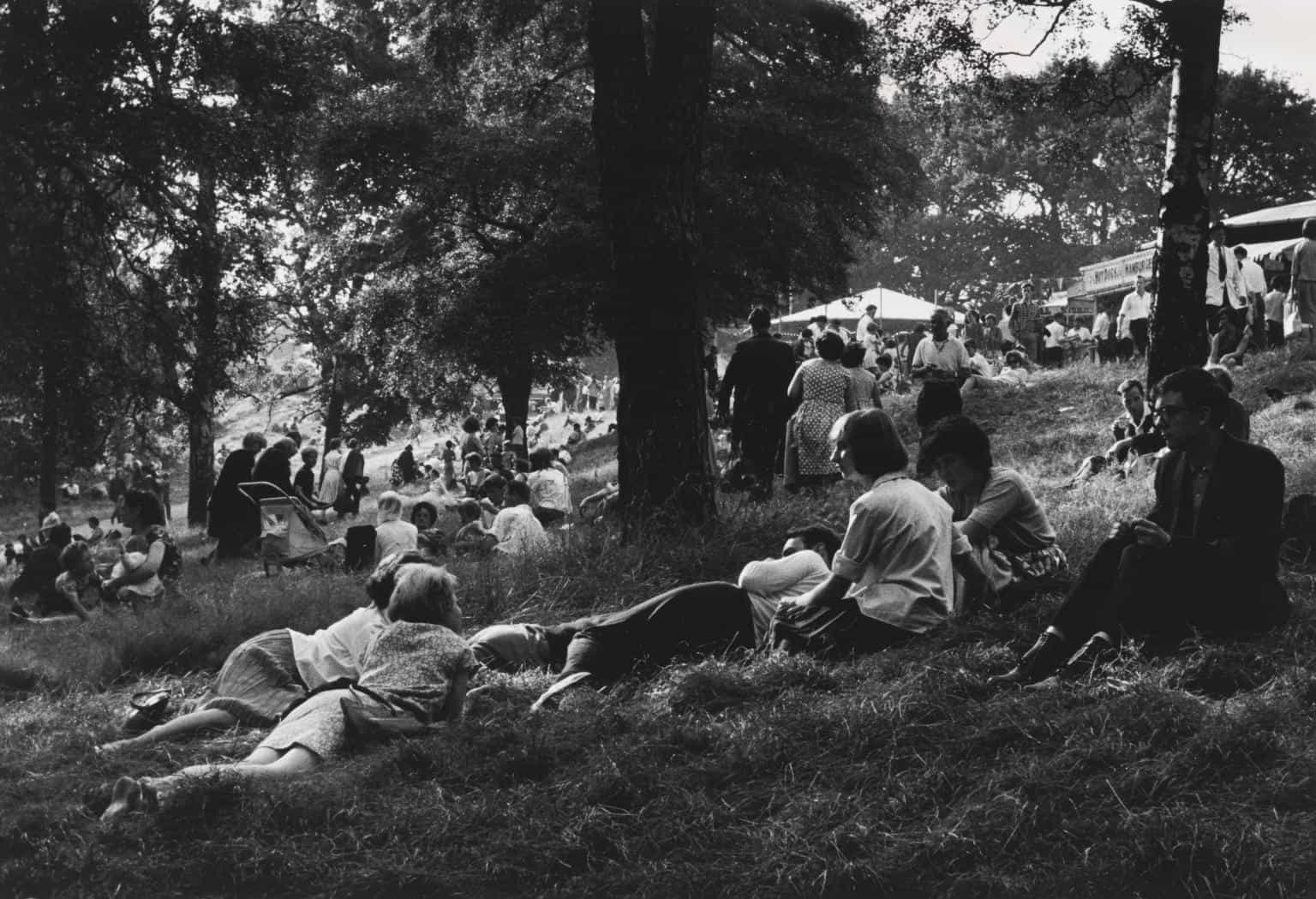
Easter Fair 1964, Hampstead Heath by Wolfgang Suschitzky
Wolfgang Suschitzky (August 1912 – October 2016) was a documentary photographer, as well as a cinematographer perhaps best known for his collaboration with Paul Rotha in the 1940s and his work on Mike Hodges' 1971 film Get Carter.
Andrew Pulver described Suschitzky in 2007 as "a living link to the prewar glory days of the British documentary movement." Steve Chibnall writes that Suschitzky "[developed] a reputation as an expert location photographer with a documentarist's ability to extract atmosphere from naturalistic settings." His photographs have been exhibited at the National Gallery, the Austrian Cultural Forum in London and The Photographer's Gallery, and appear in many international photography collections. He was the father of cinematographer Peter Suschitzky (born 1941), classical musician and writer Misha Donat, and Julia Donat.
This biography is from Wikipedia under an Attribution-ShareAlike Creative Commons License. Read the full Wikipedia entry here.
Image source: the Tate.

1965, 'Appy 'Ampstead newspaper photograph
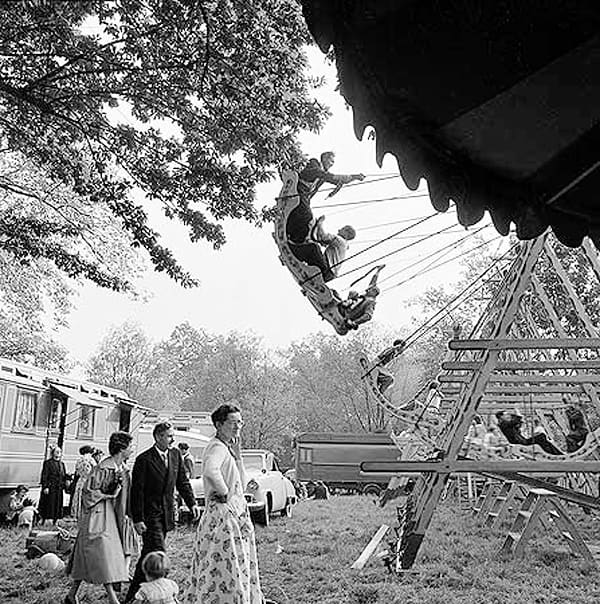
1960s, Hampstead Heath fair

1967, Donkey rides, Vale of Health

1967, Hampstead Fair
Taken by John Gay

1968, Penny glide at Hampstead fair, August Bank Holiday
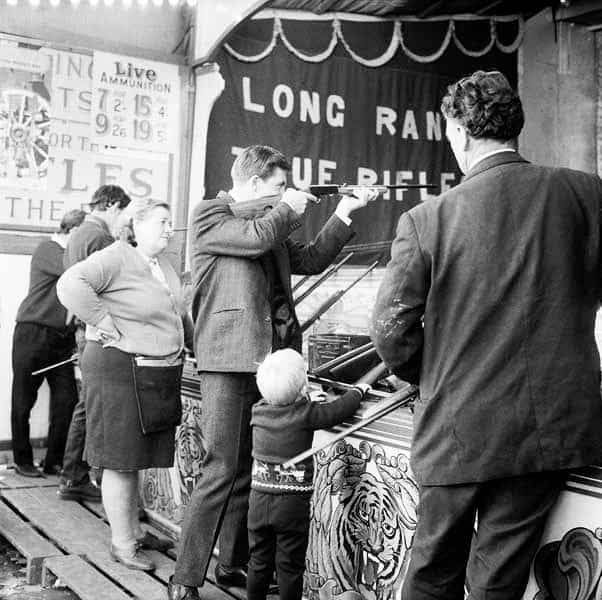
1968, Shooting range at the Heath fair


























































































